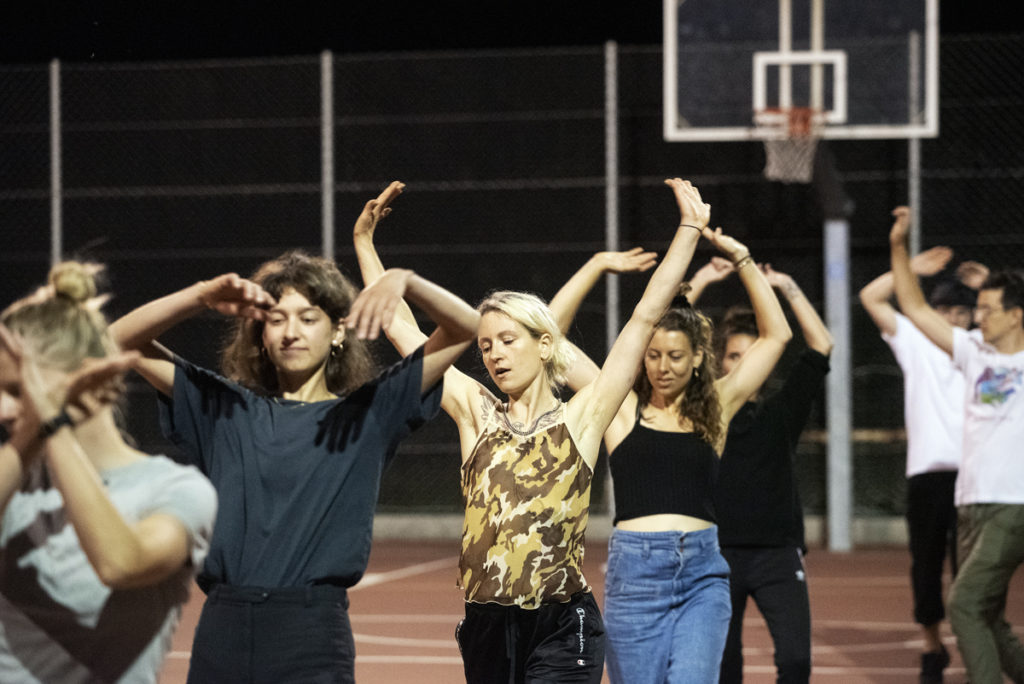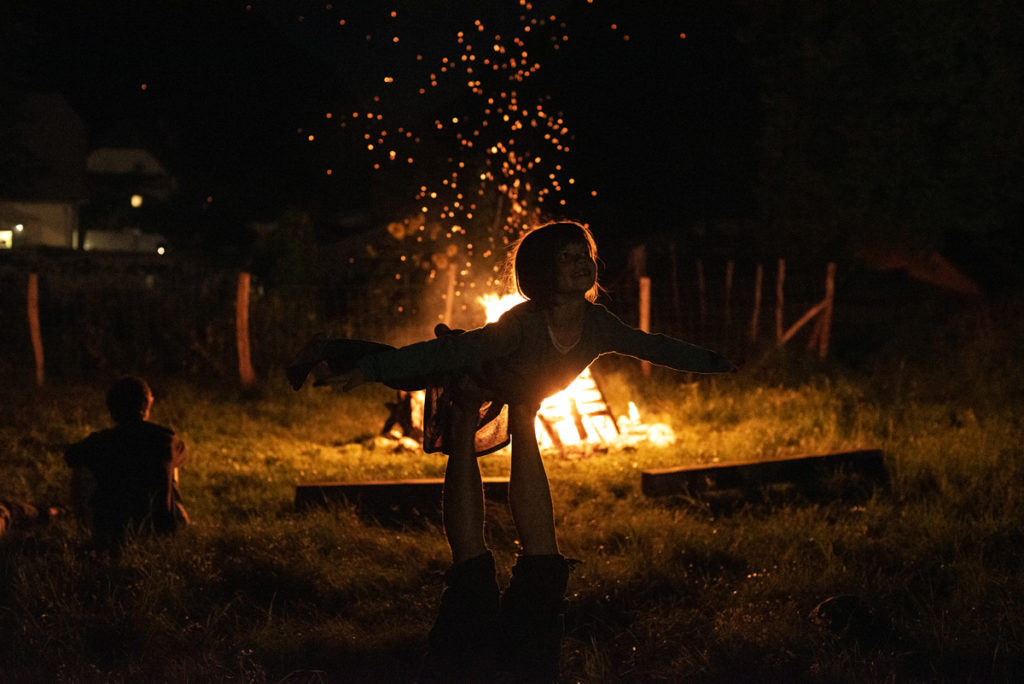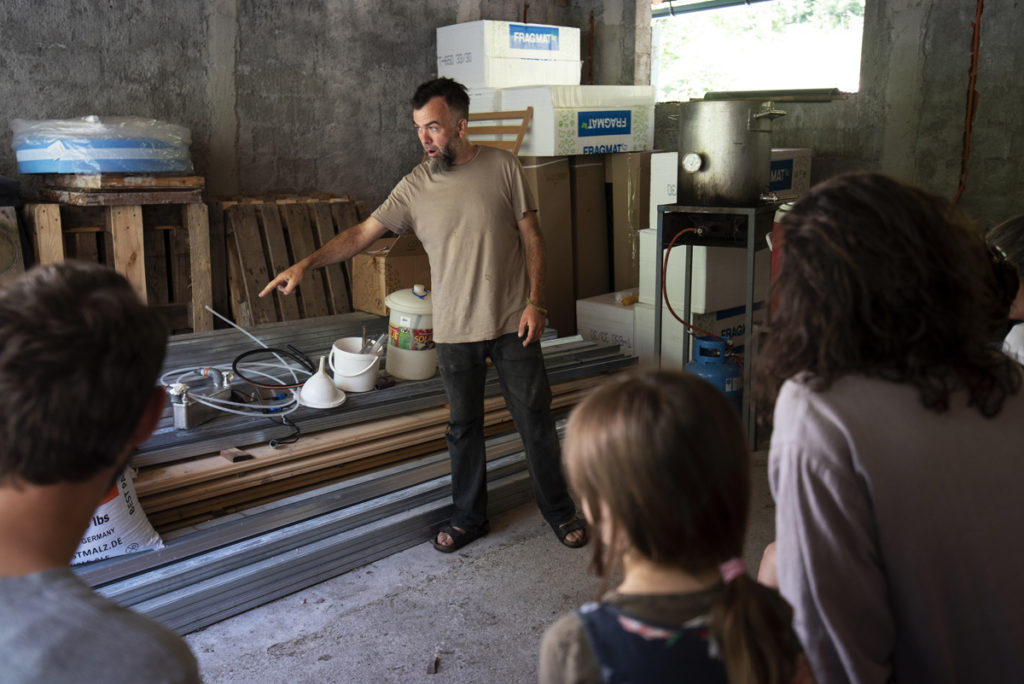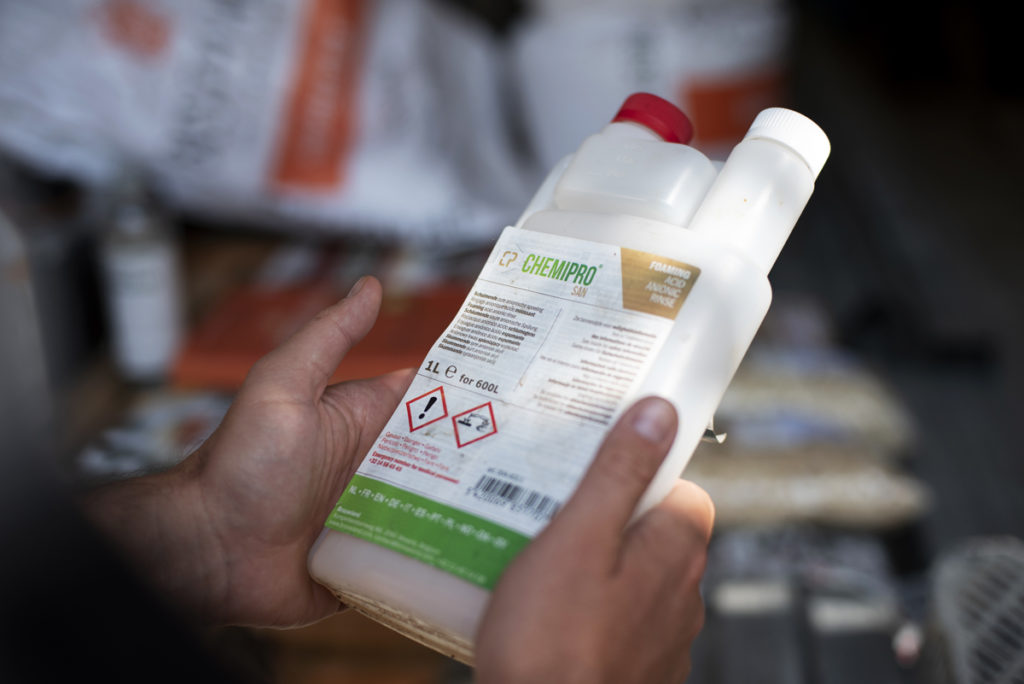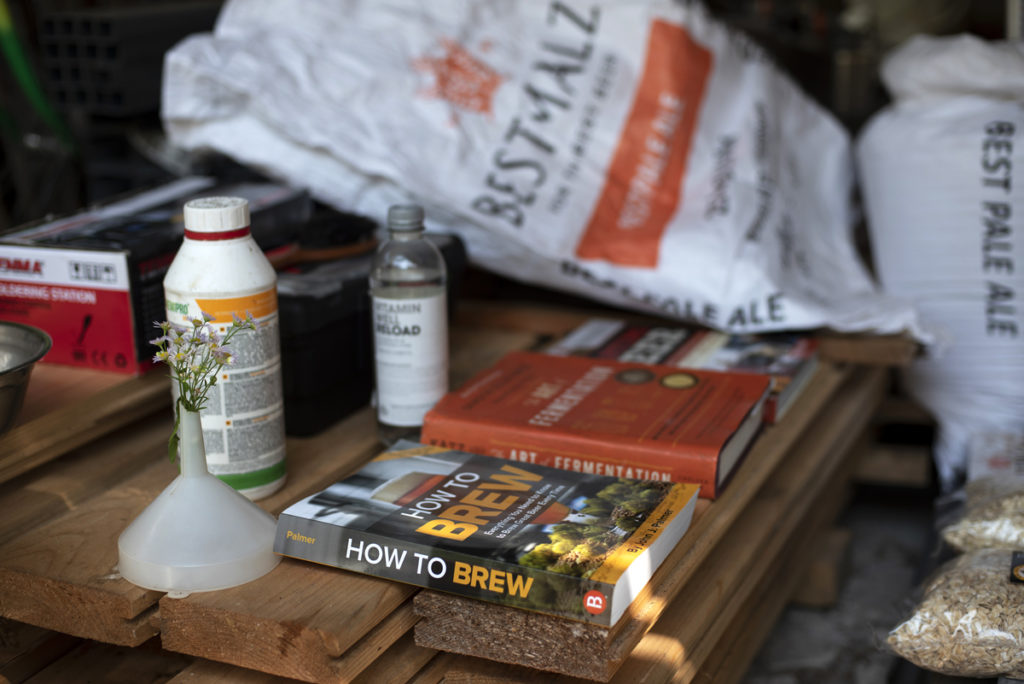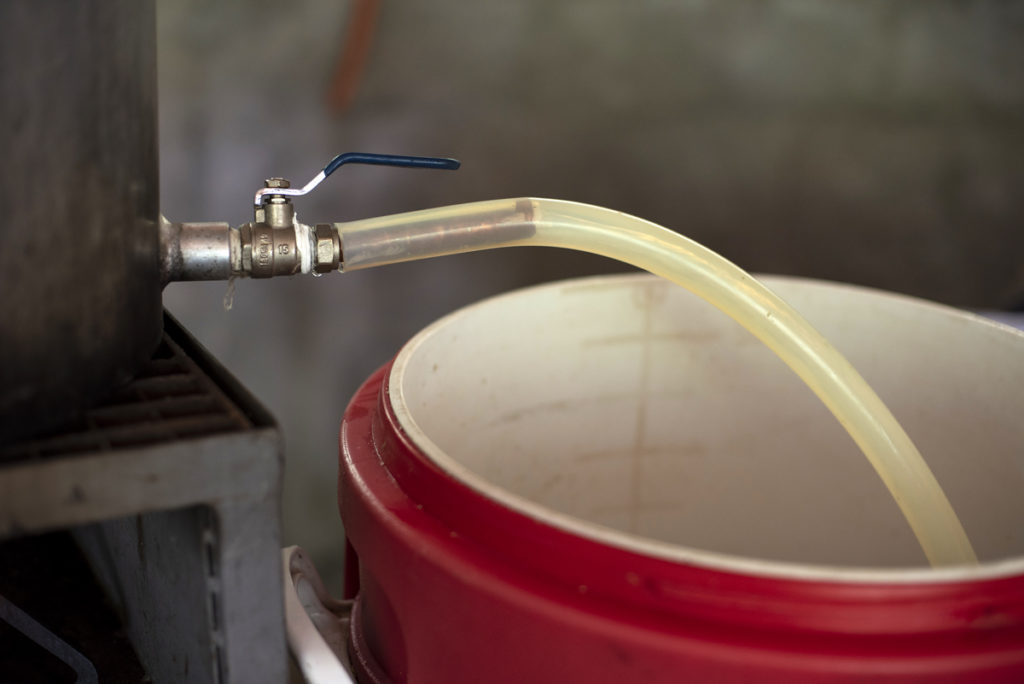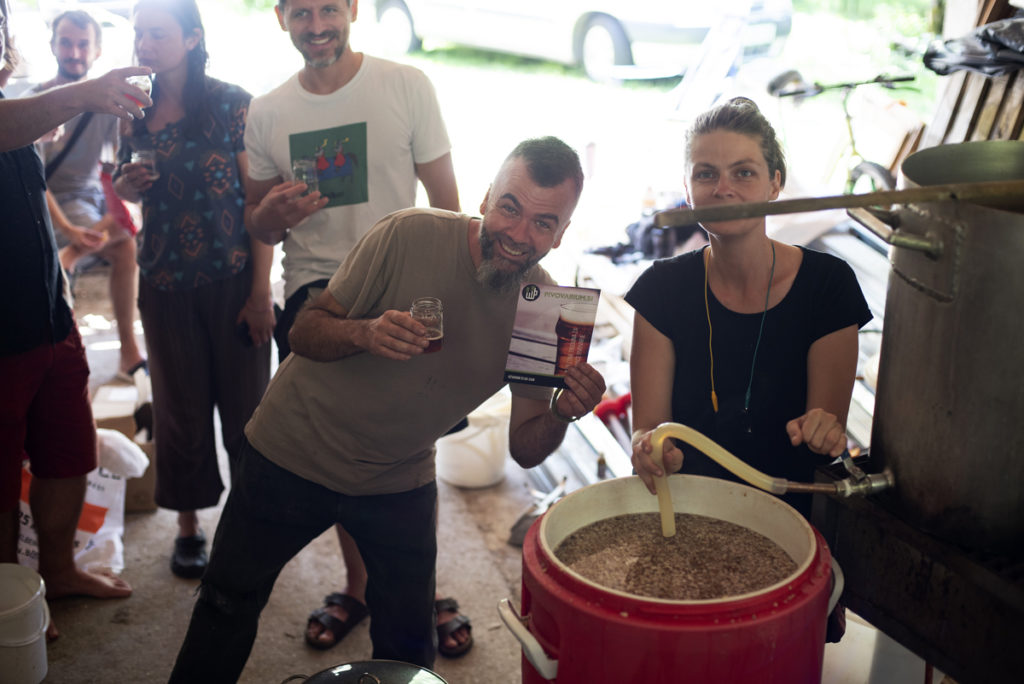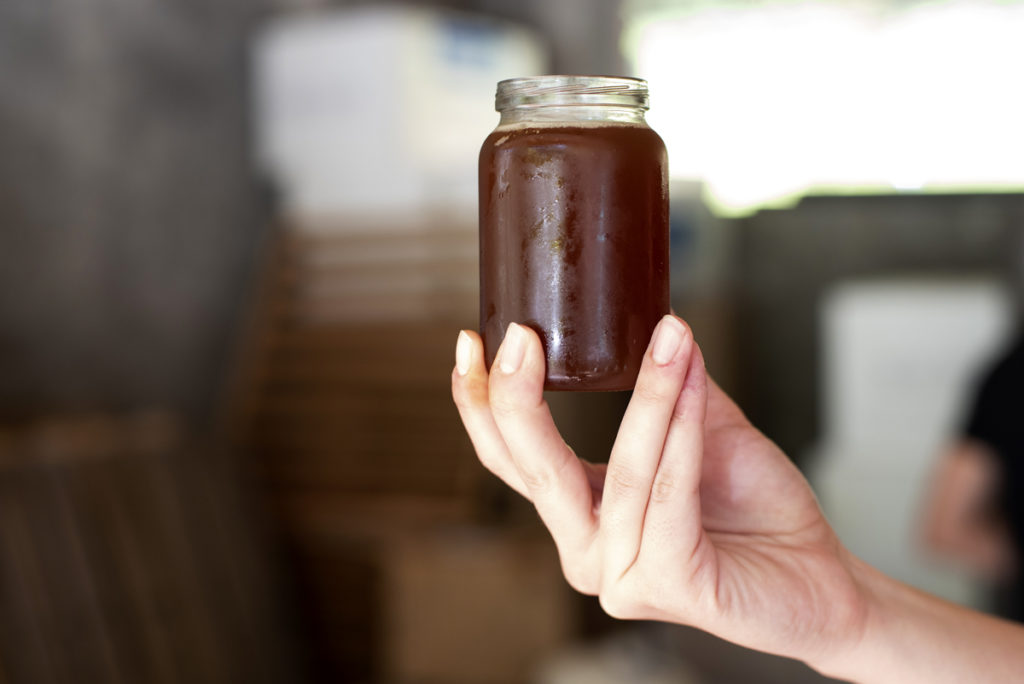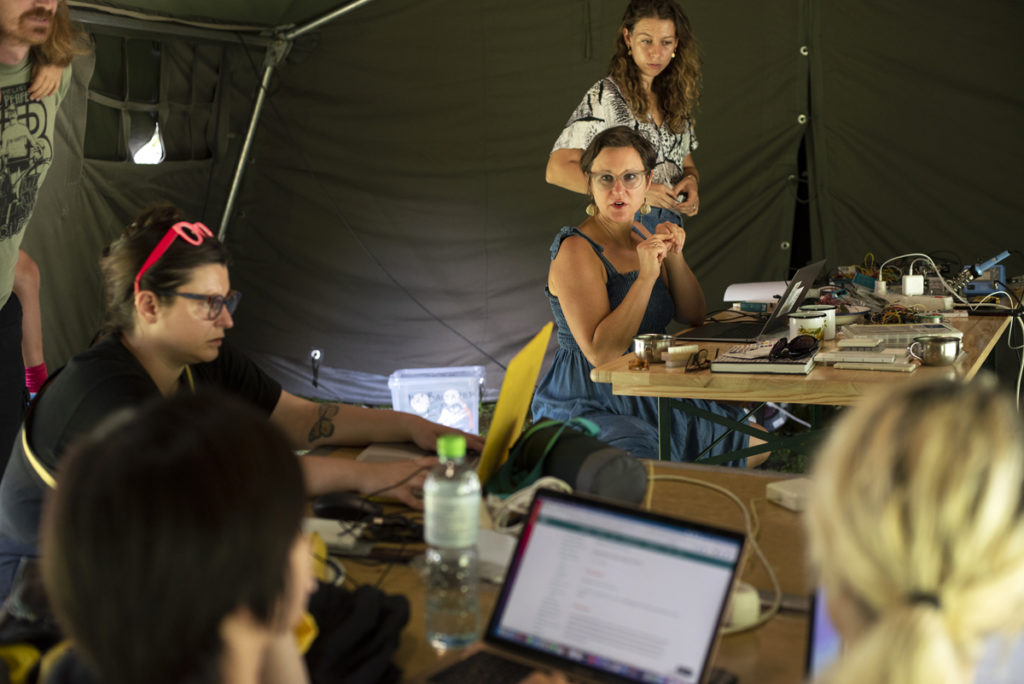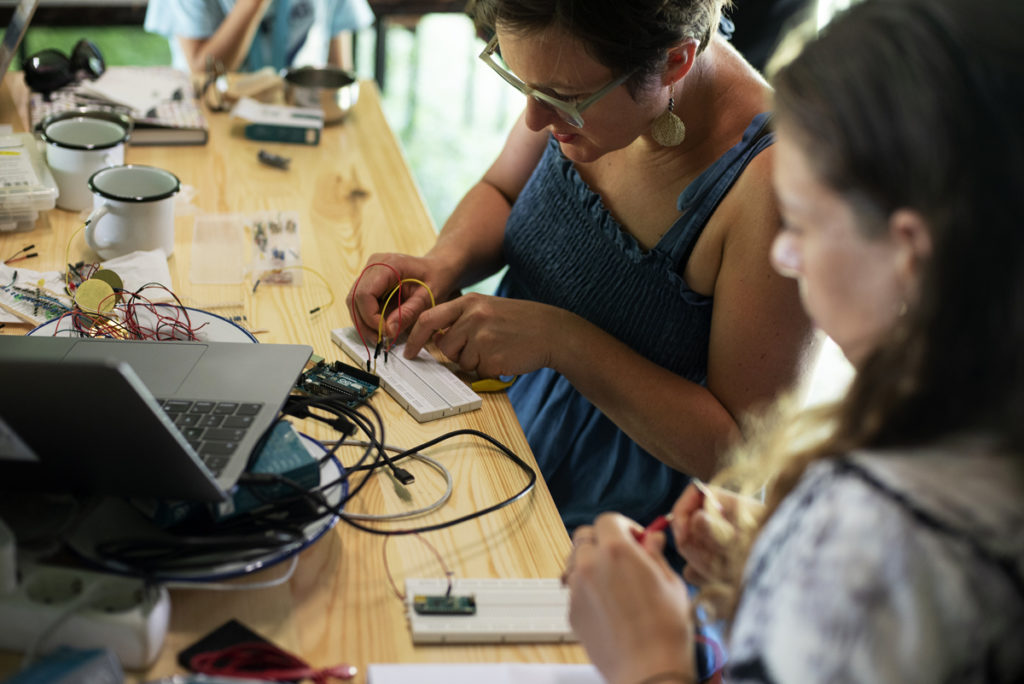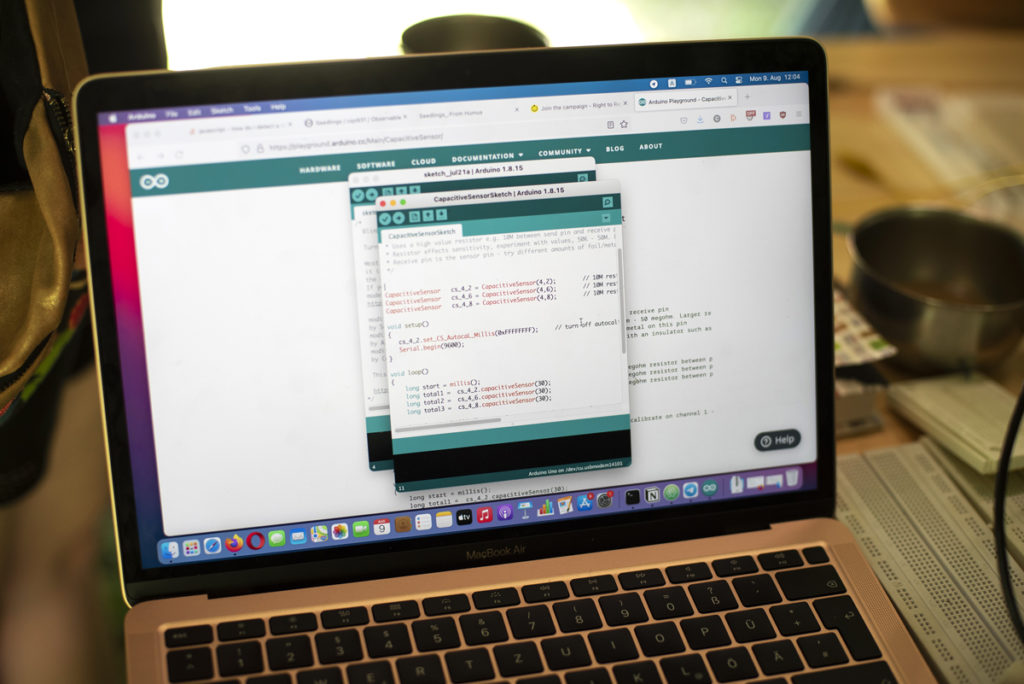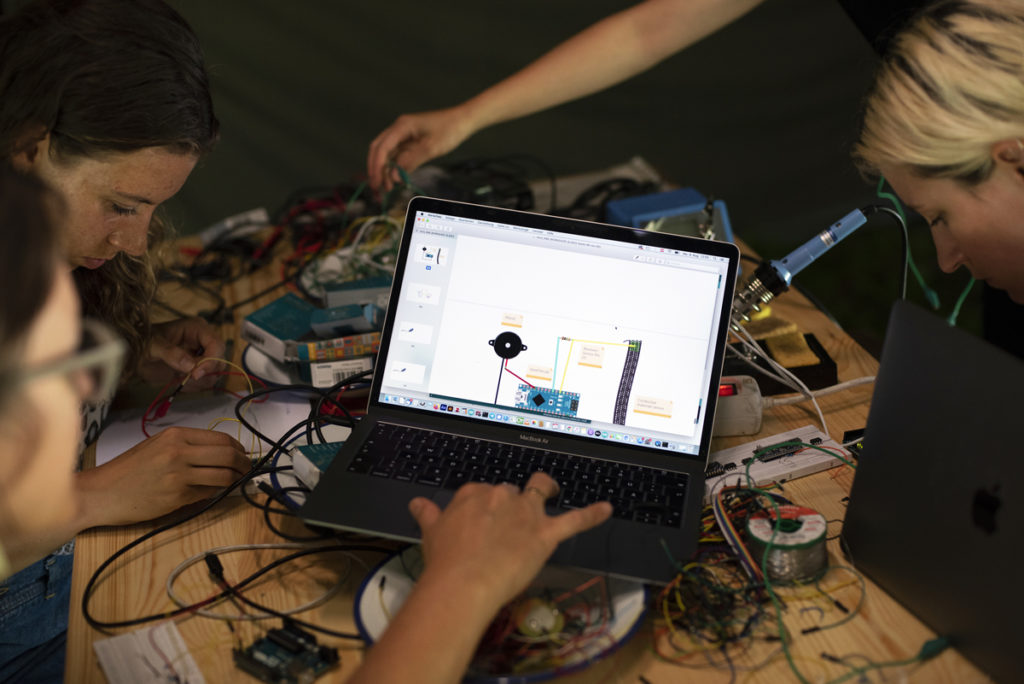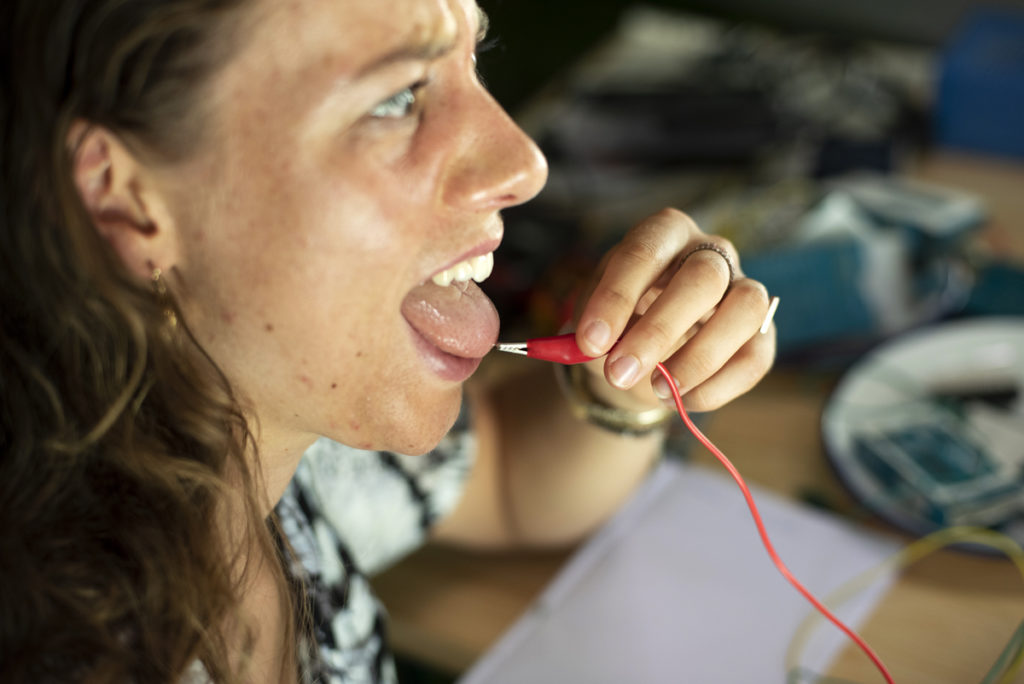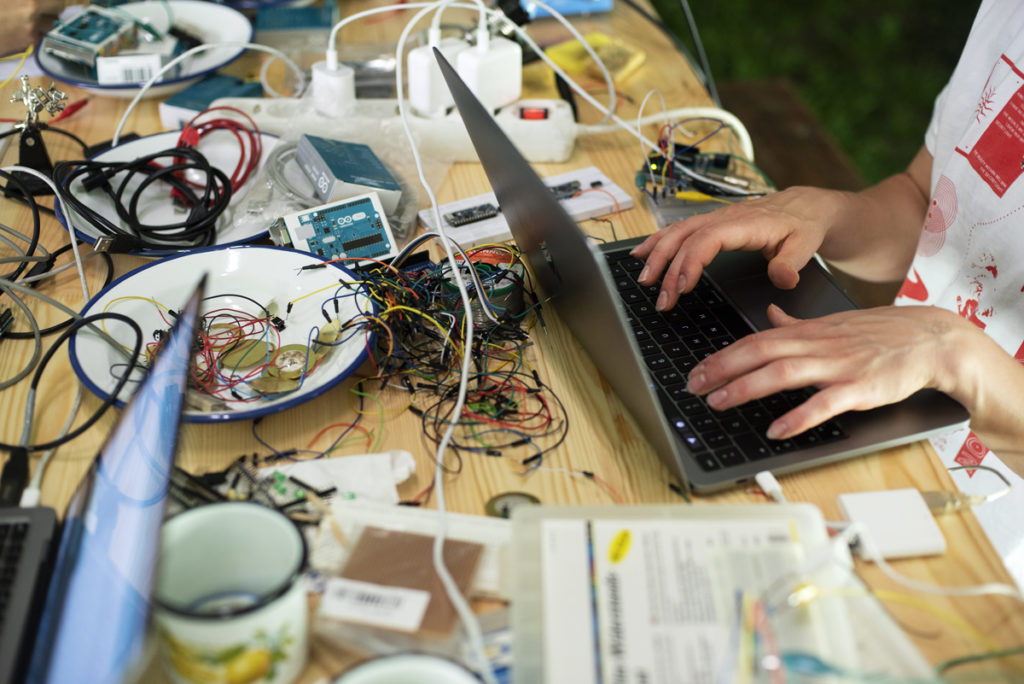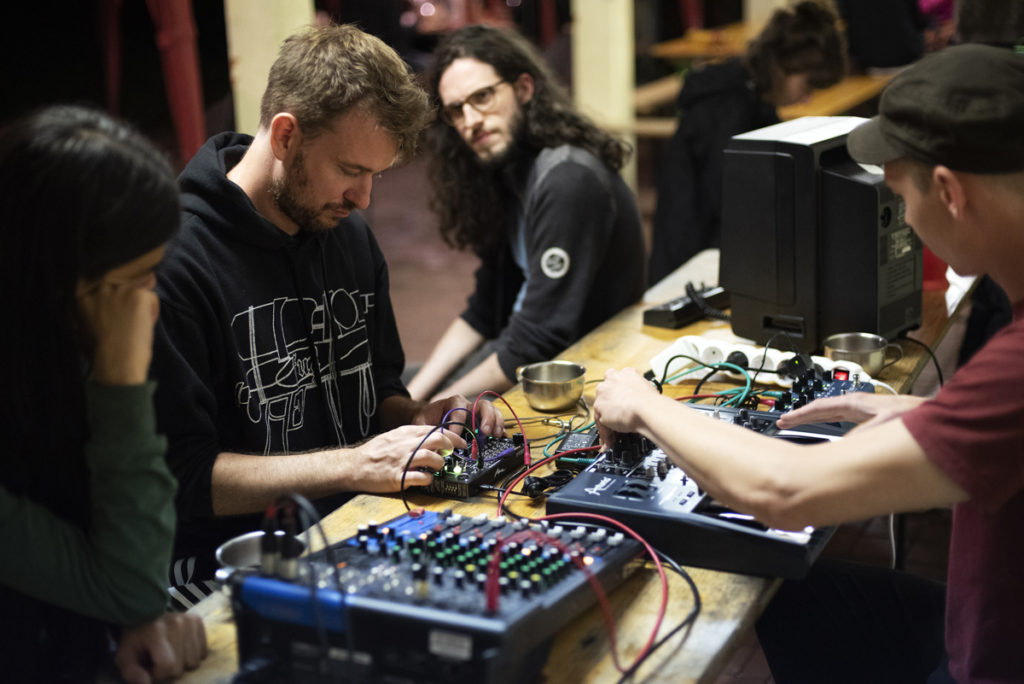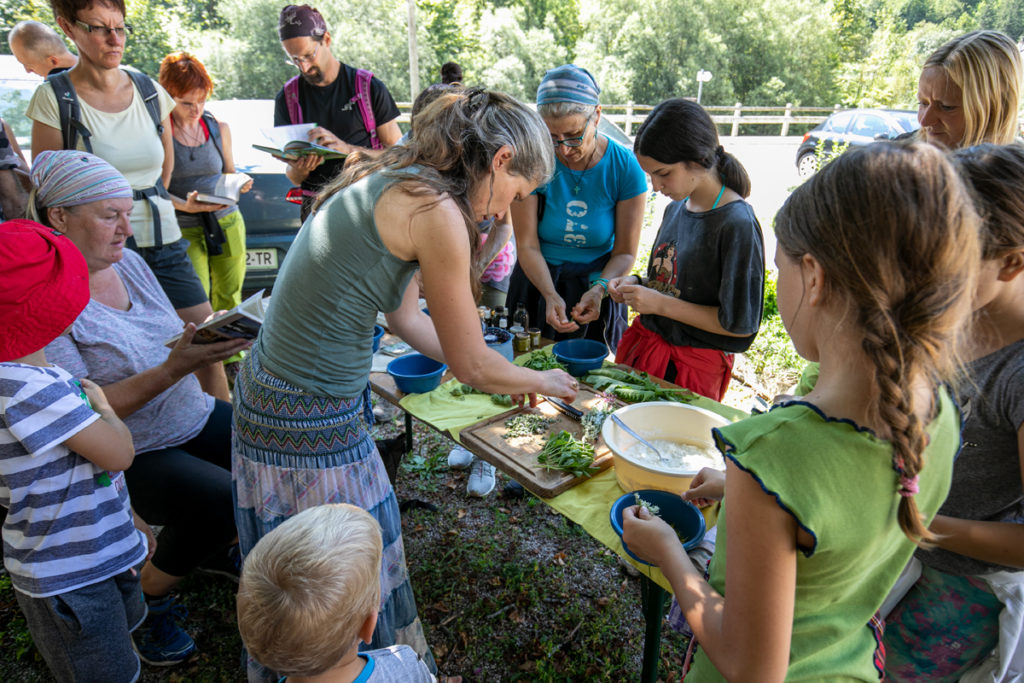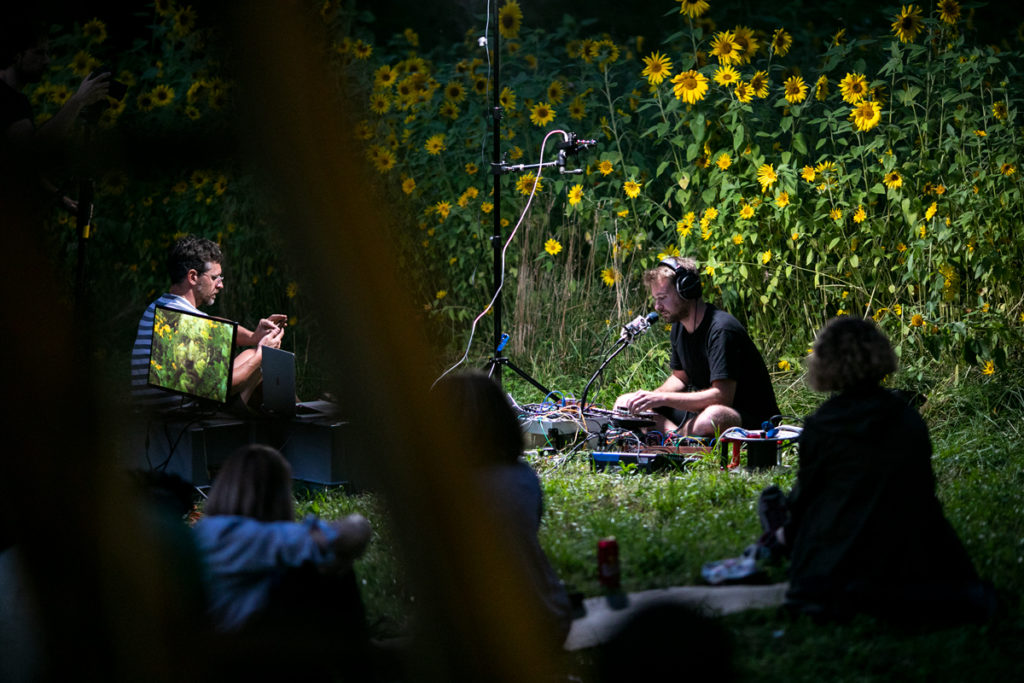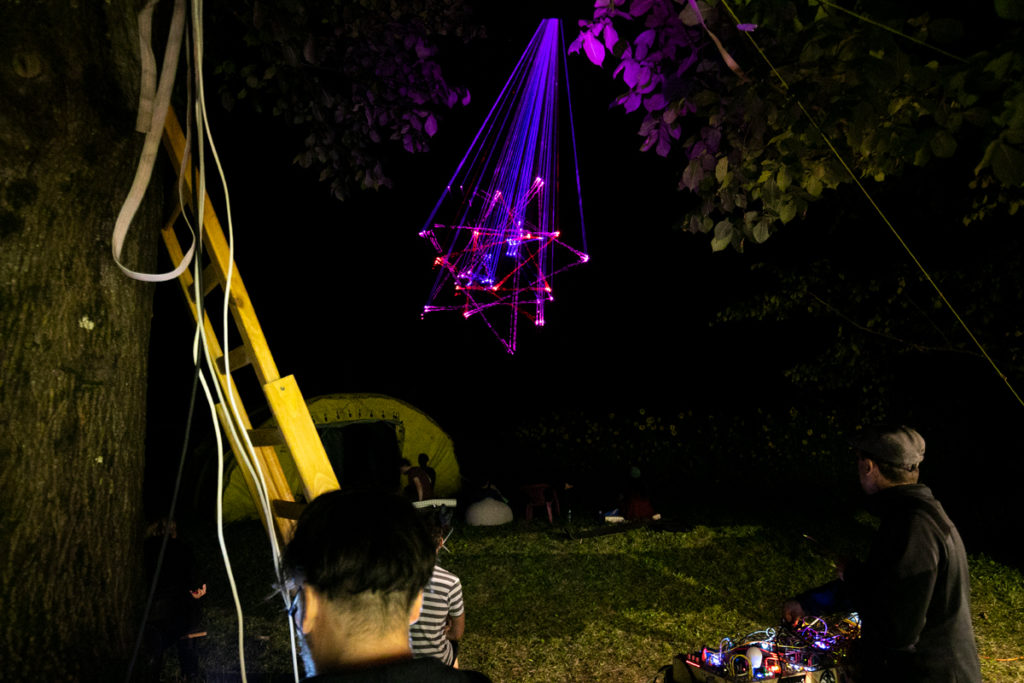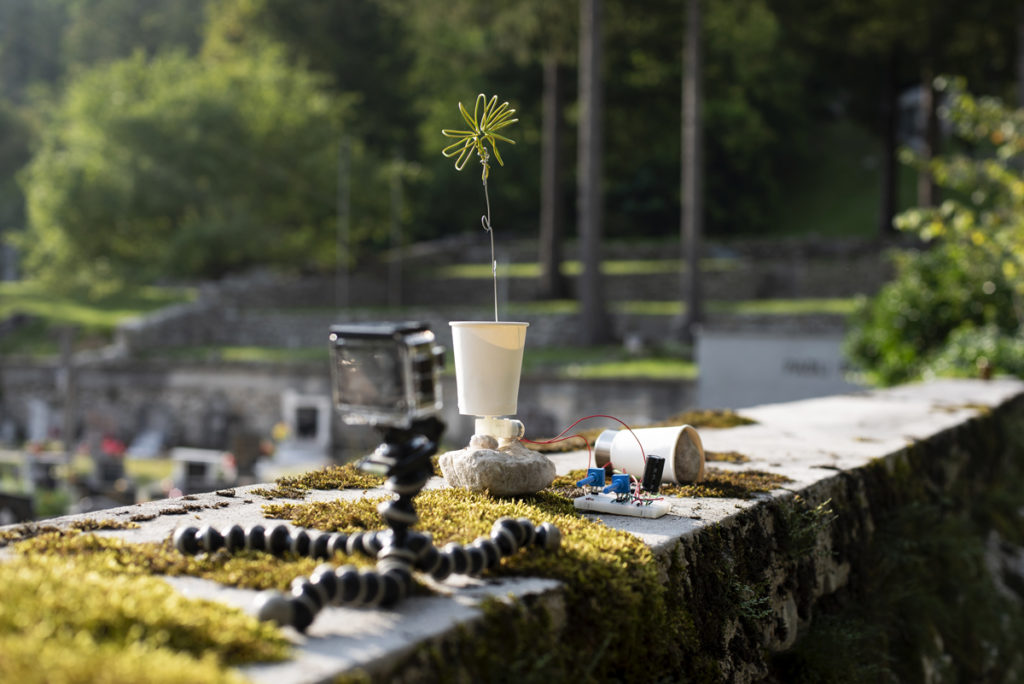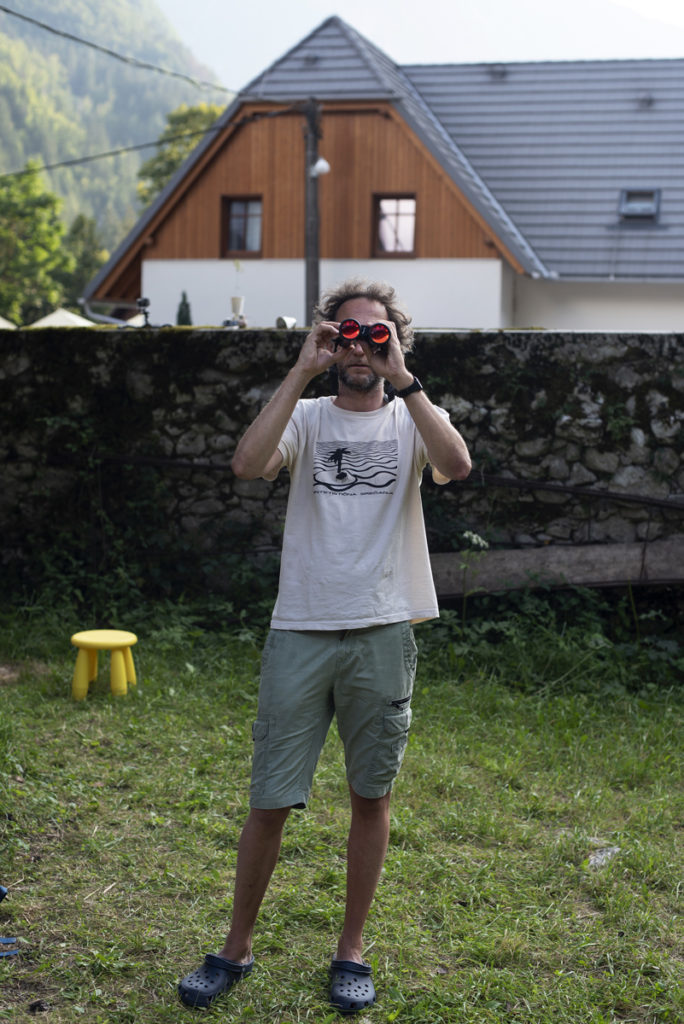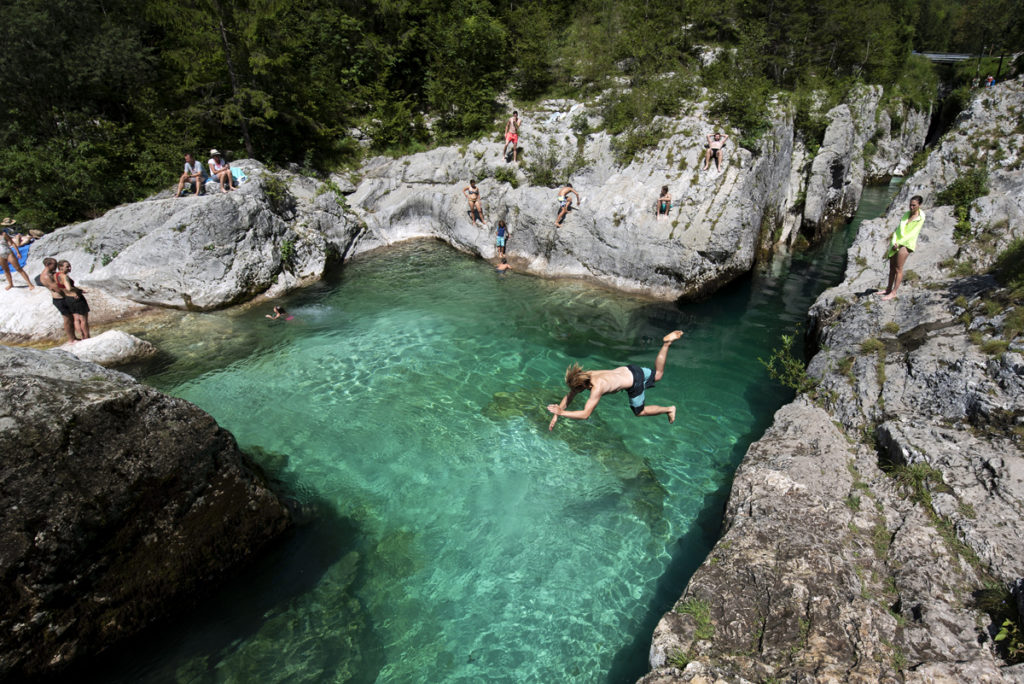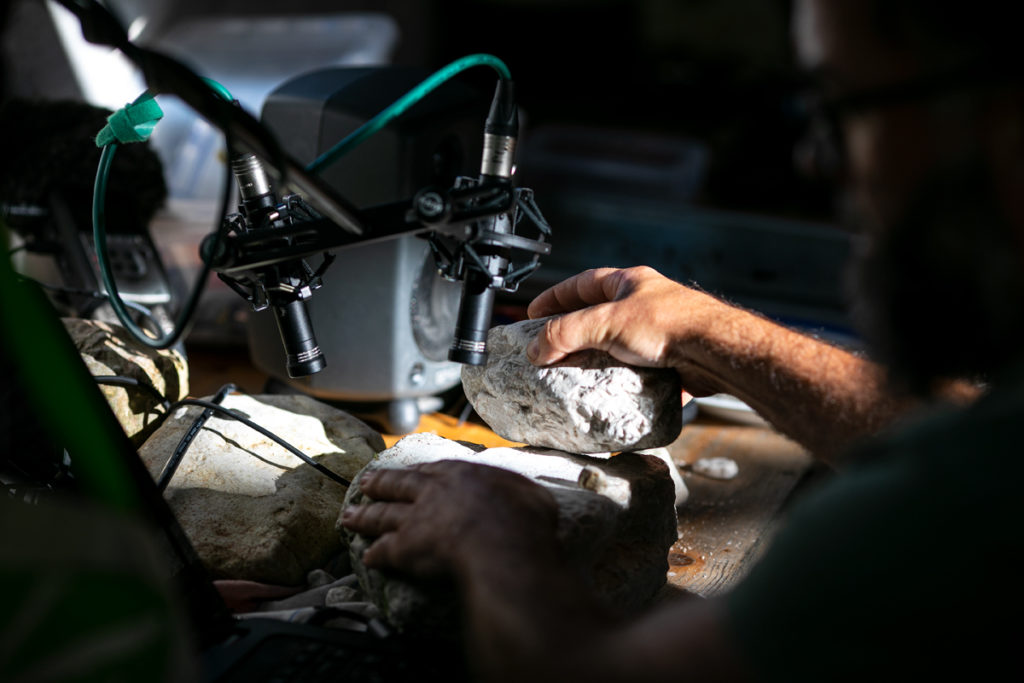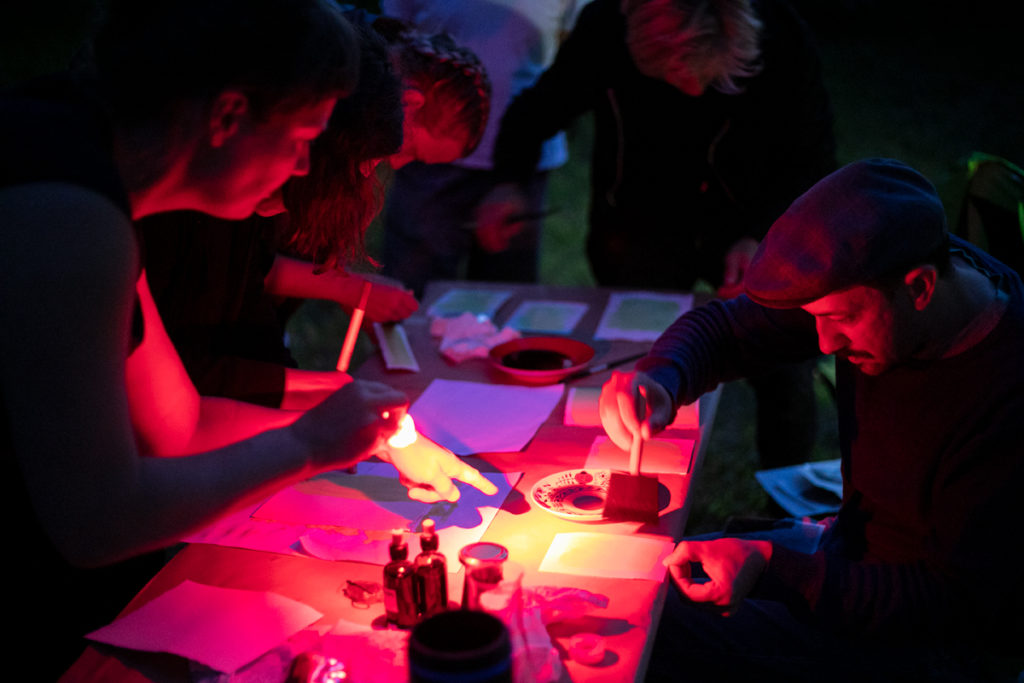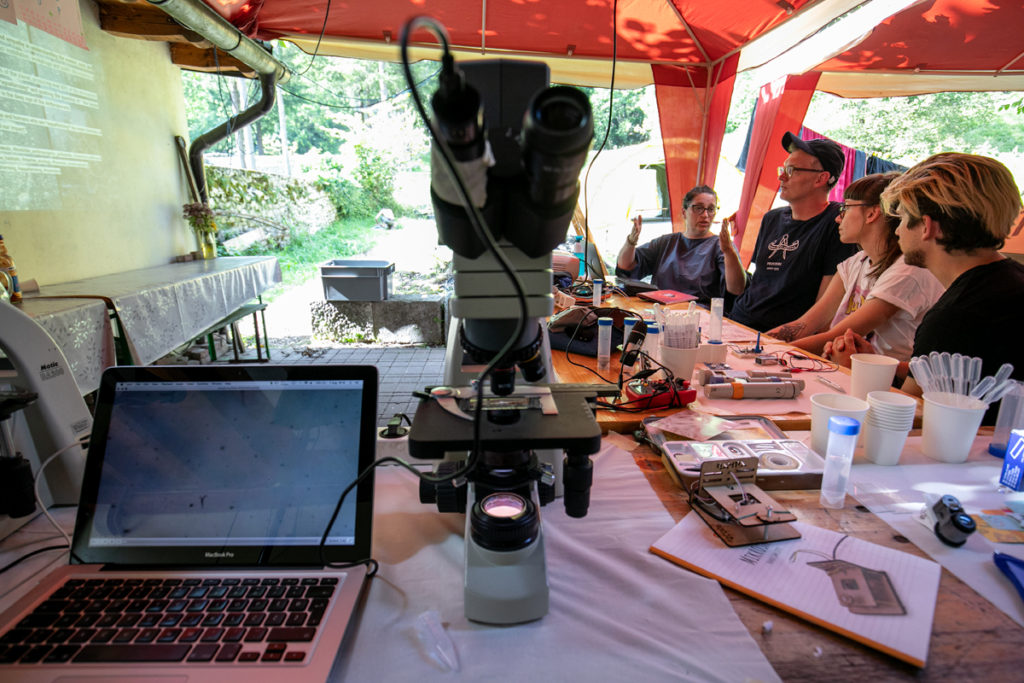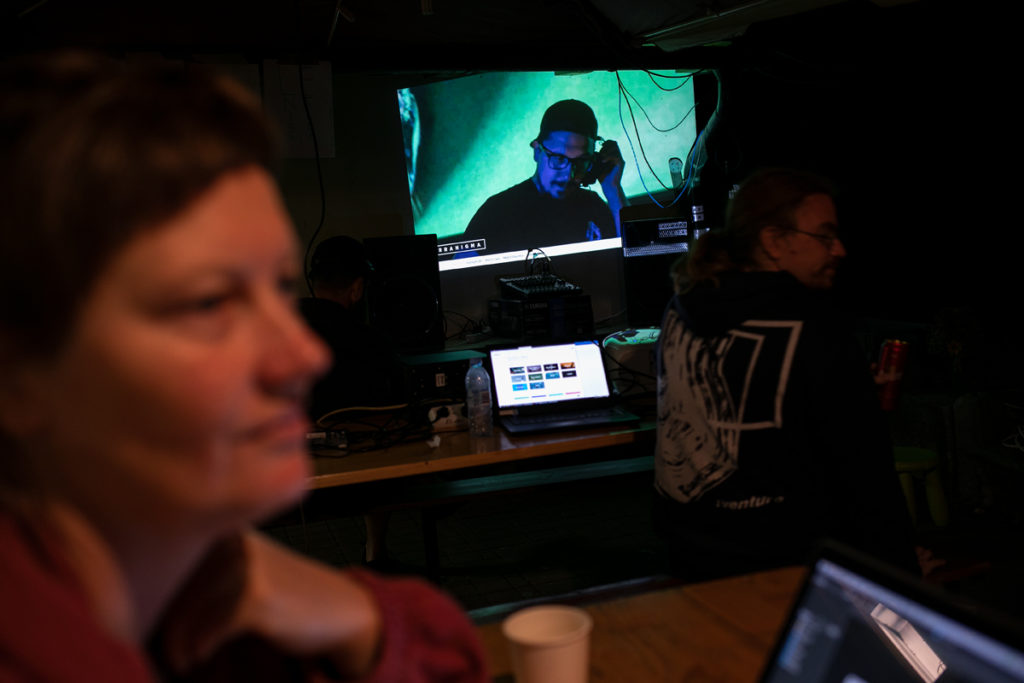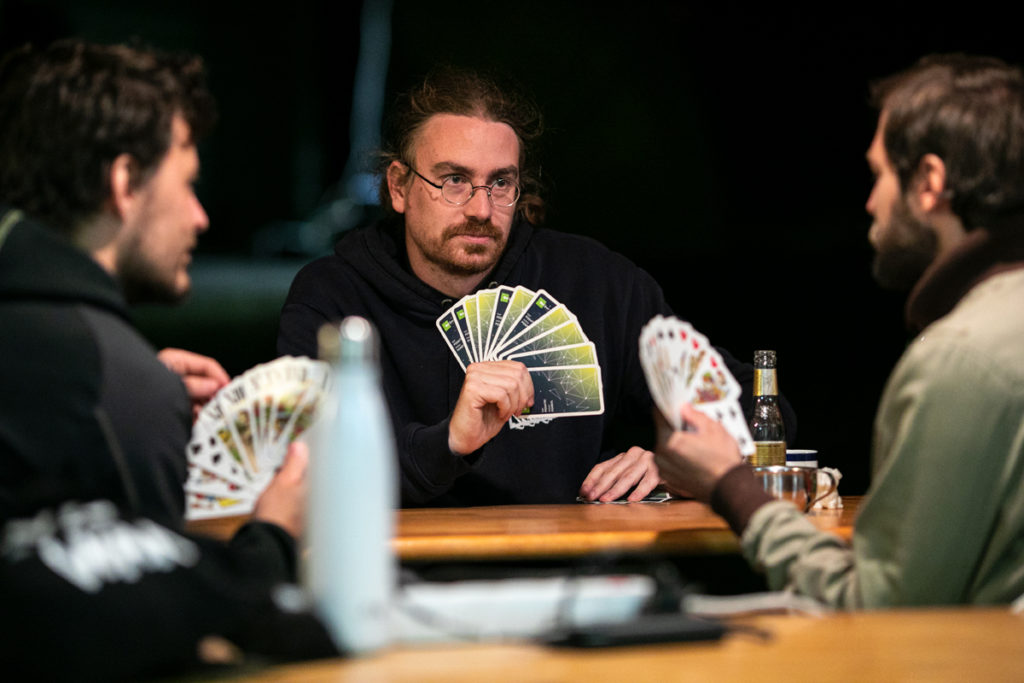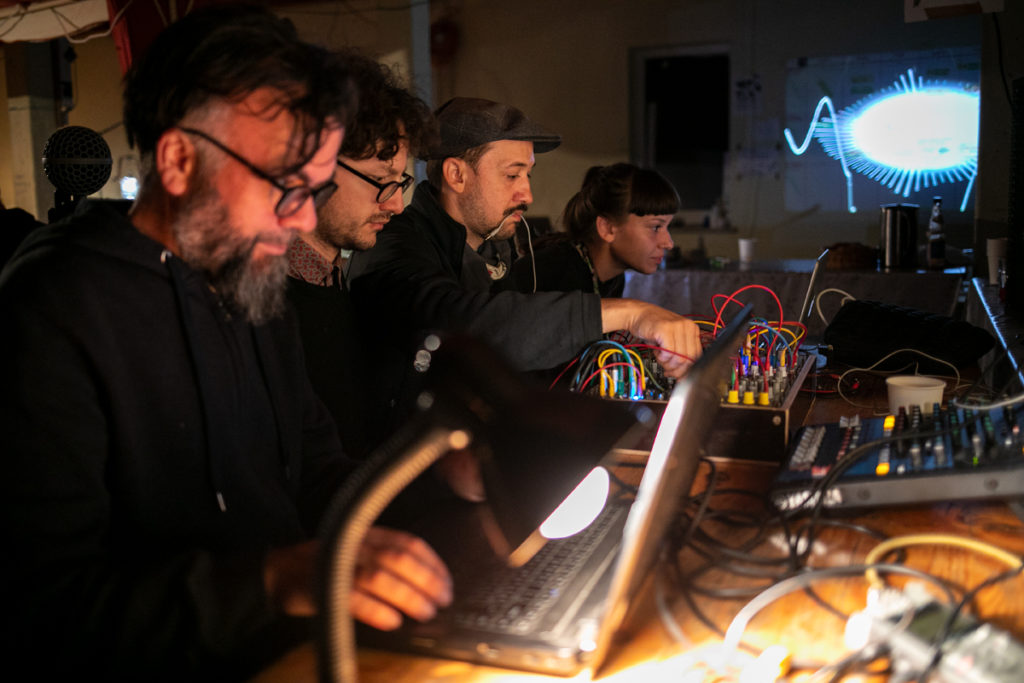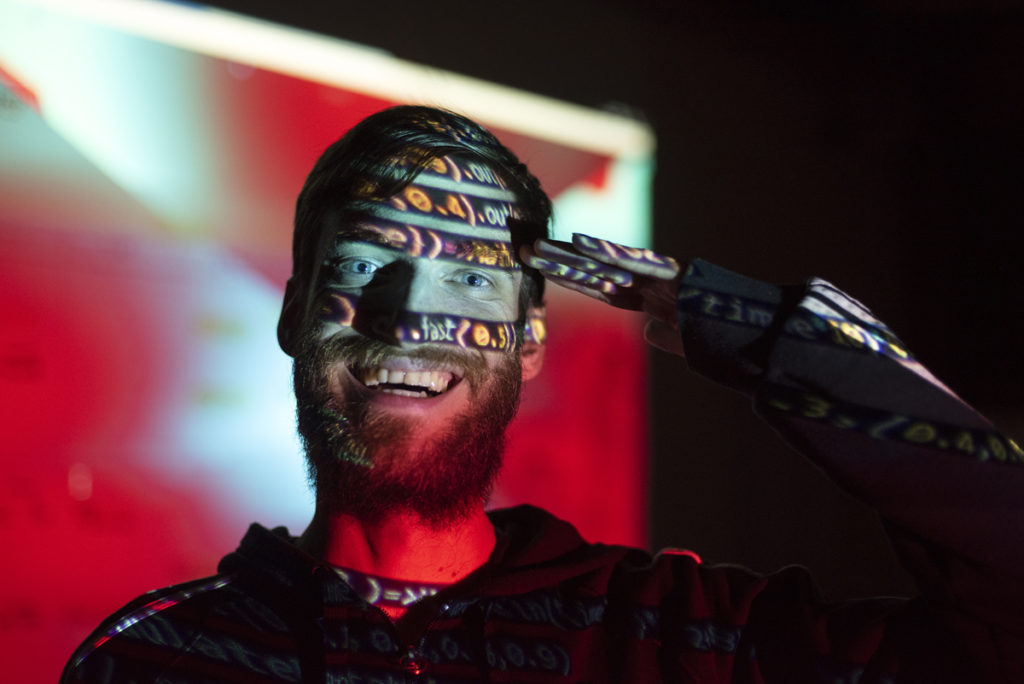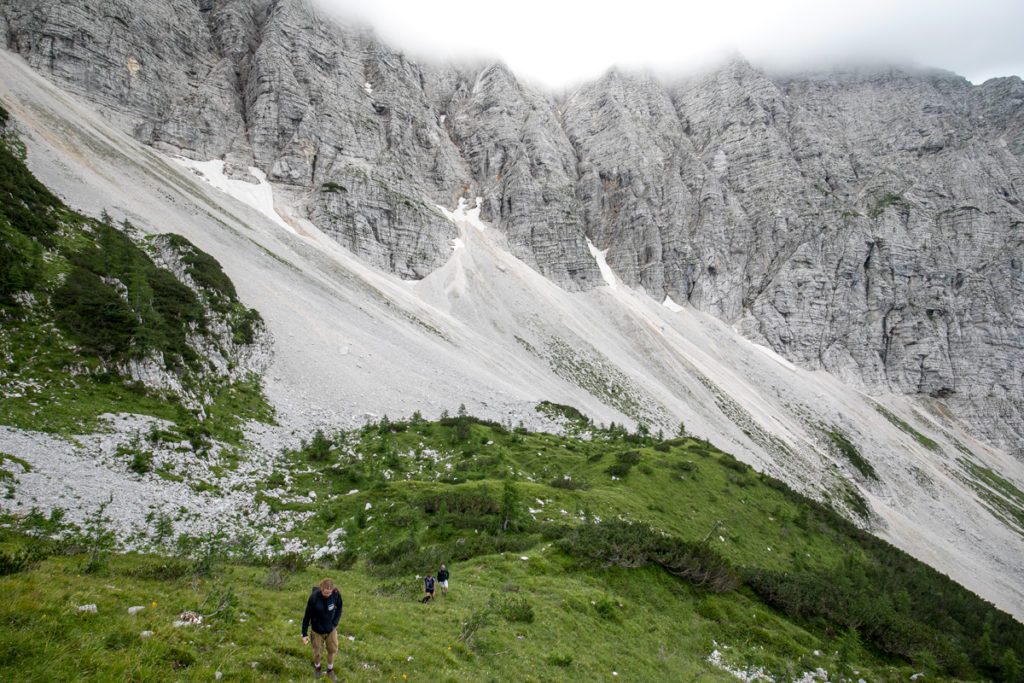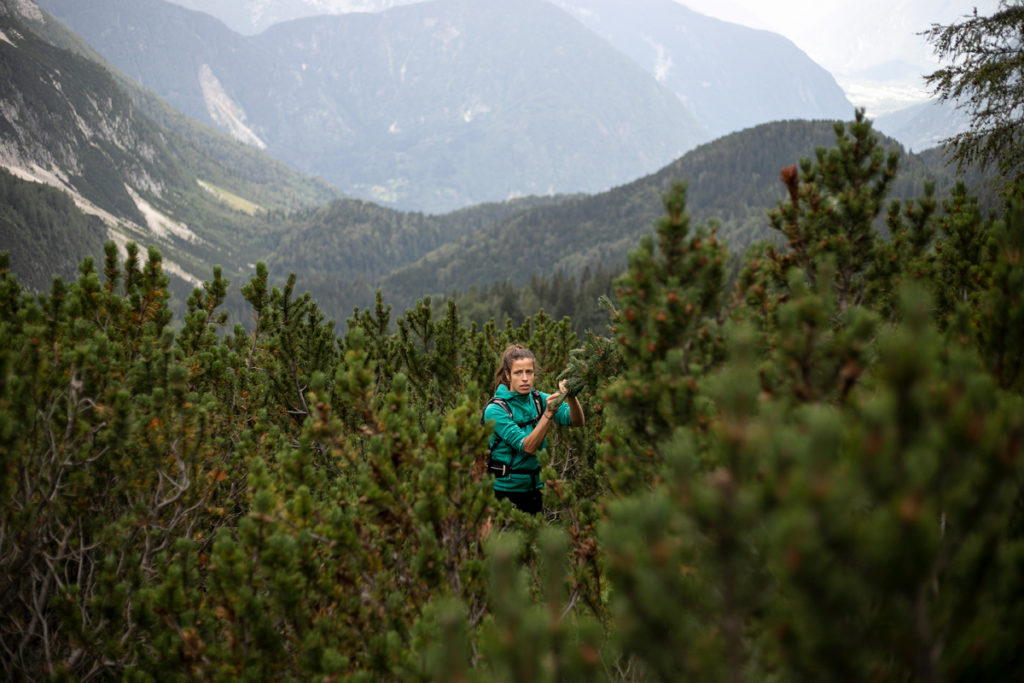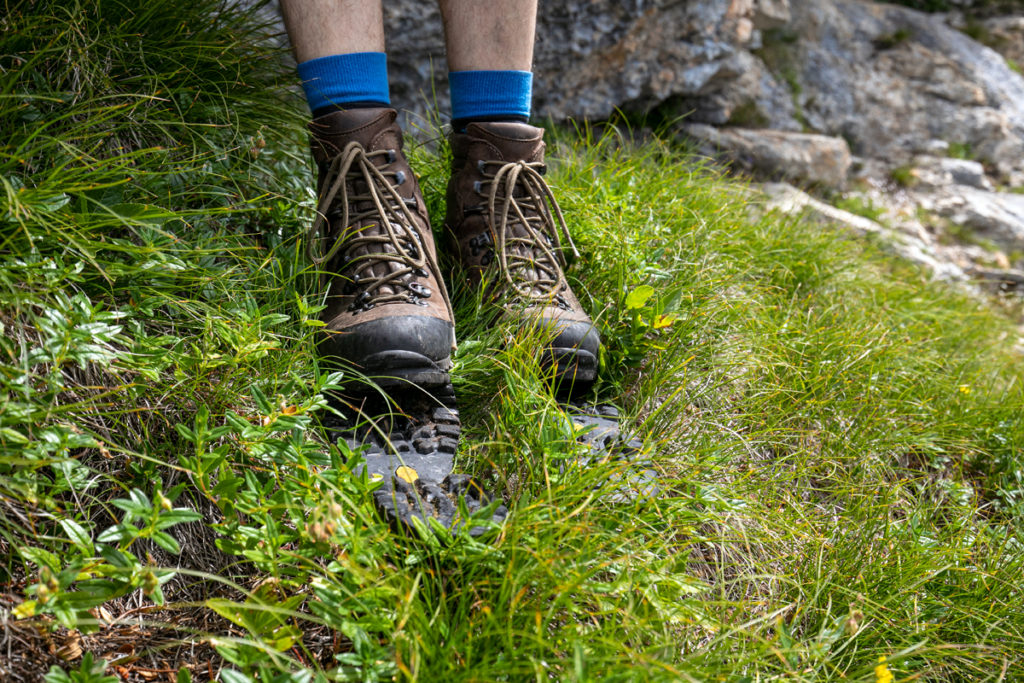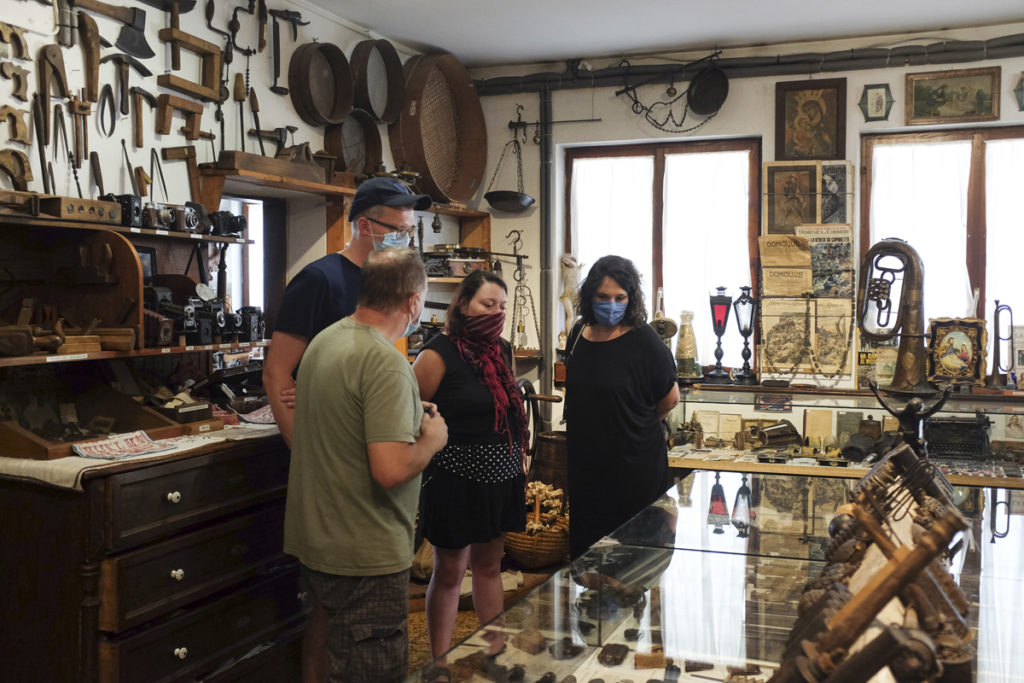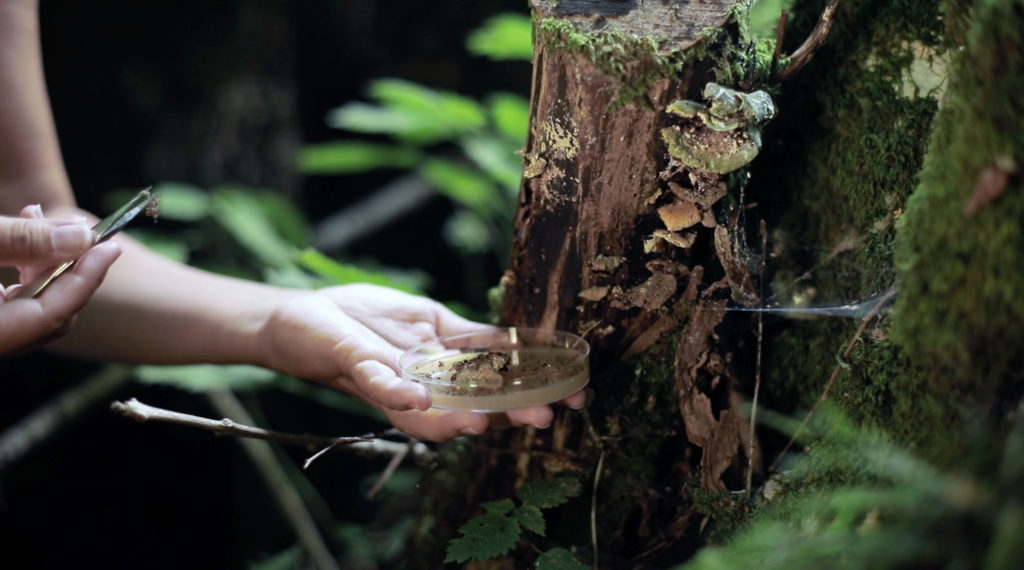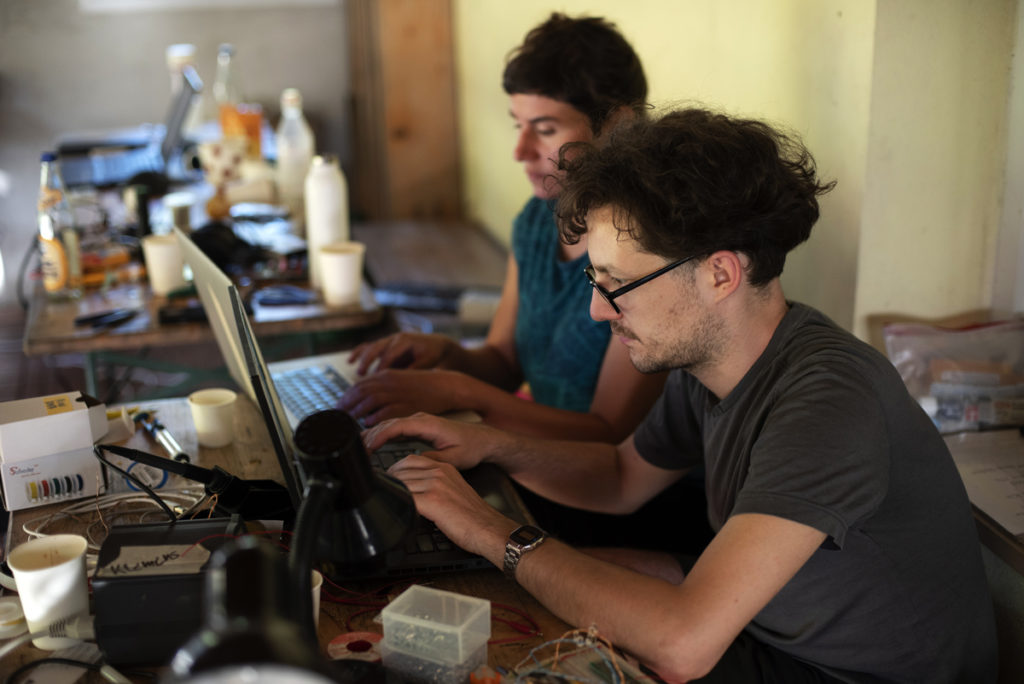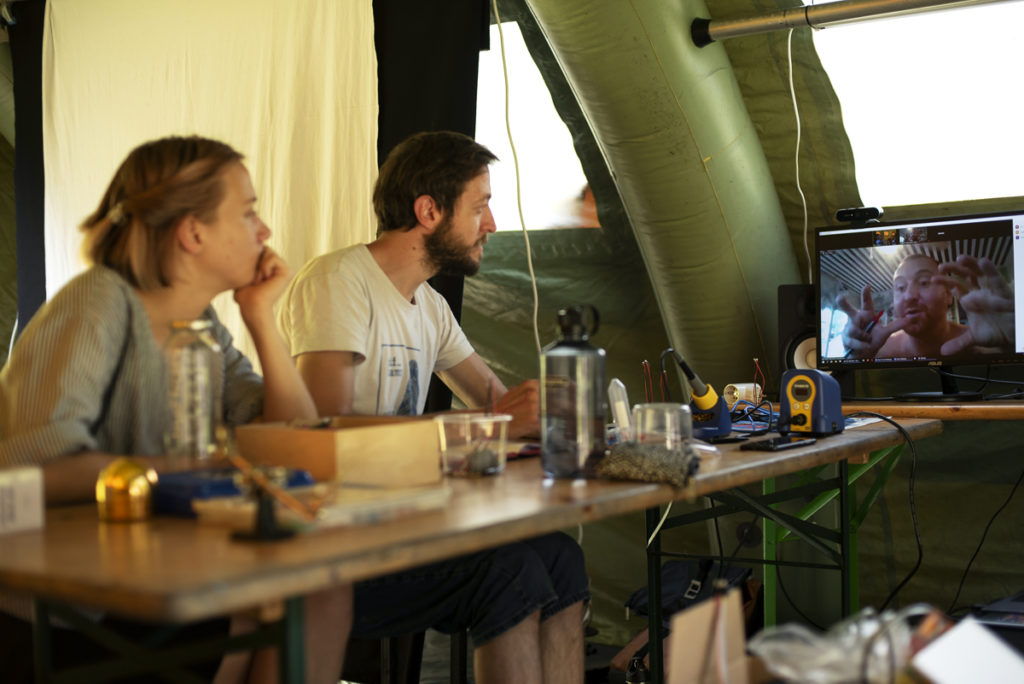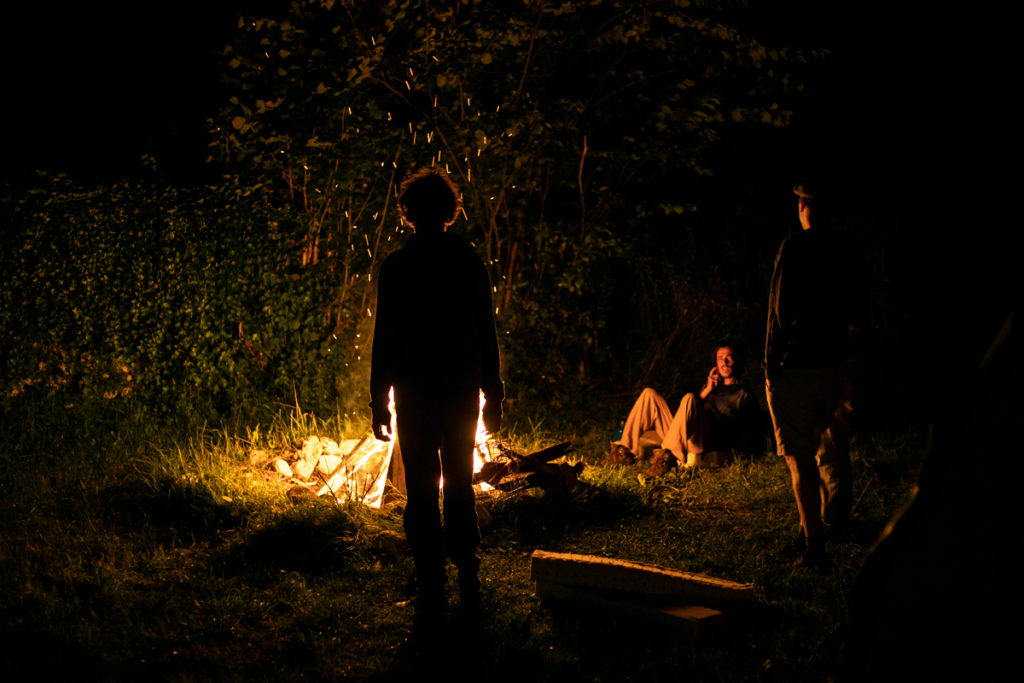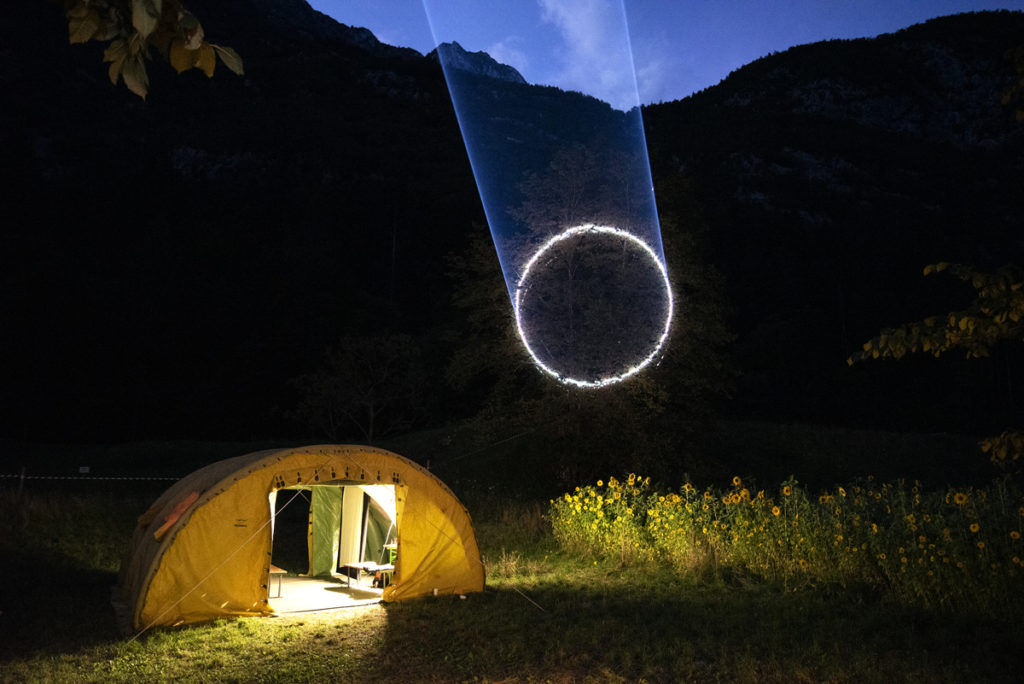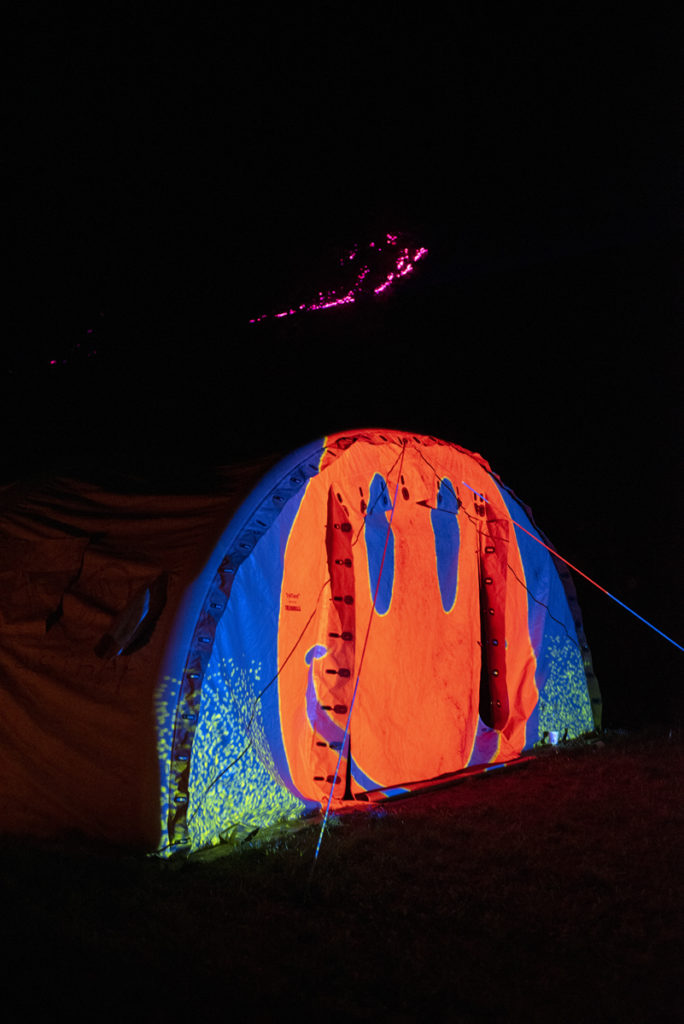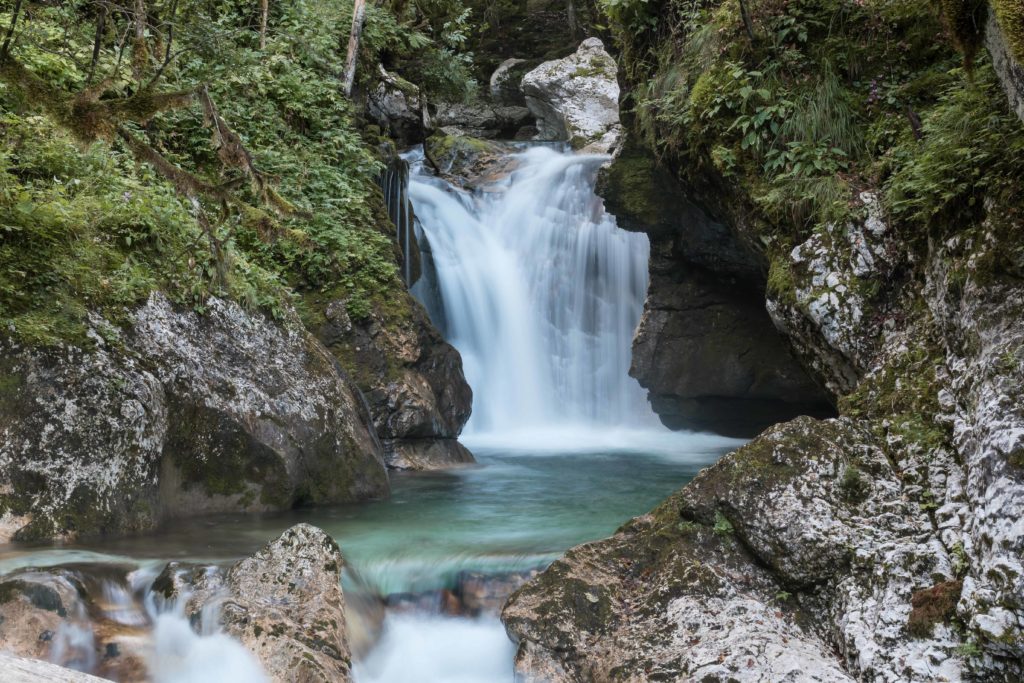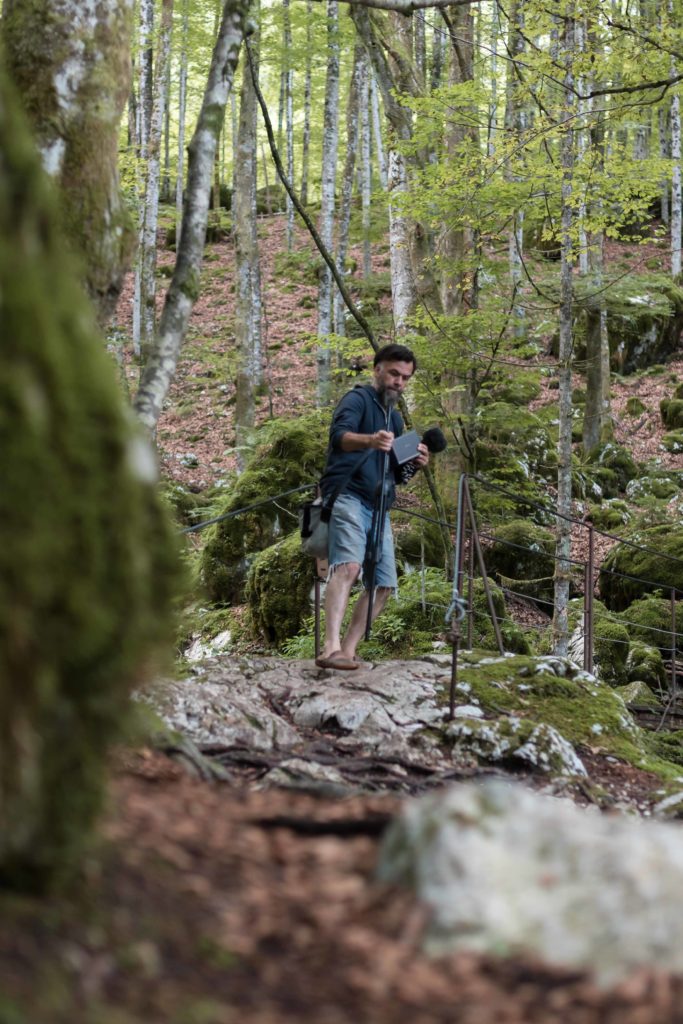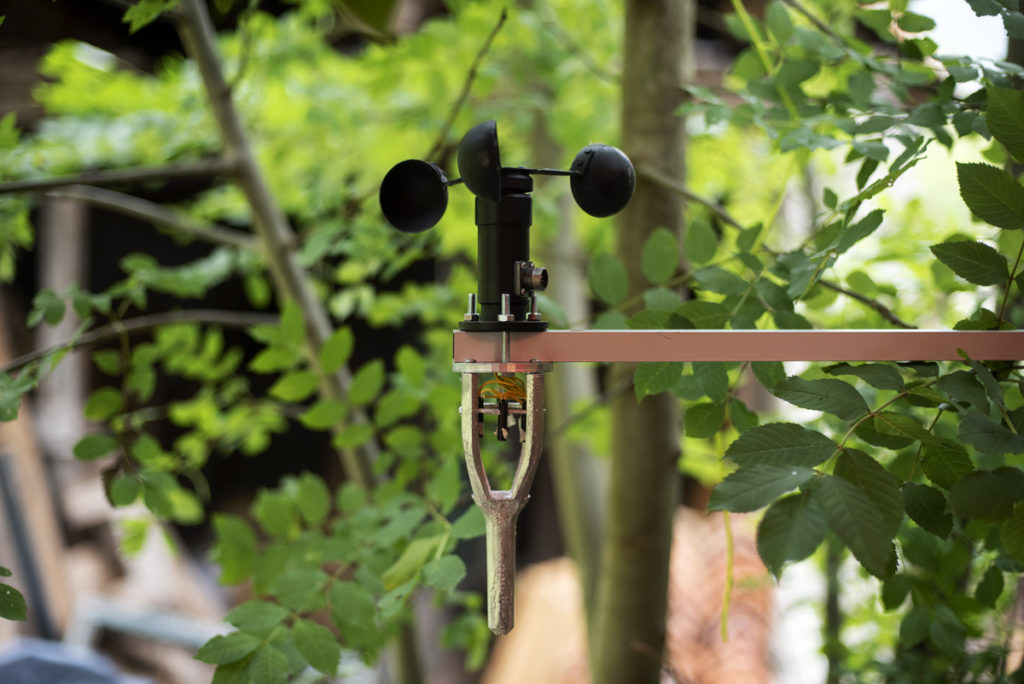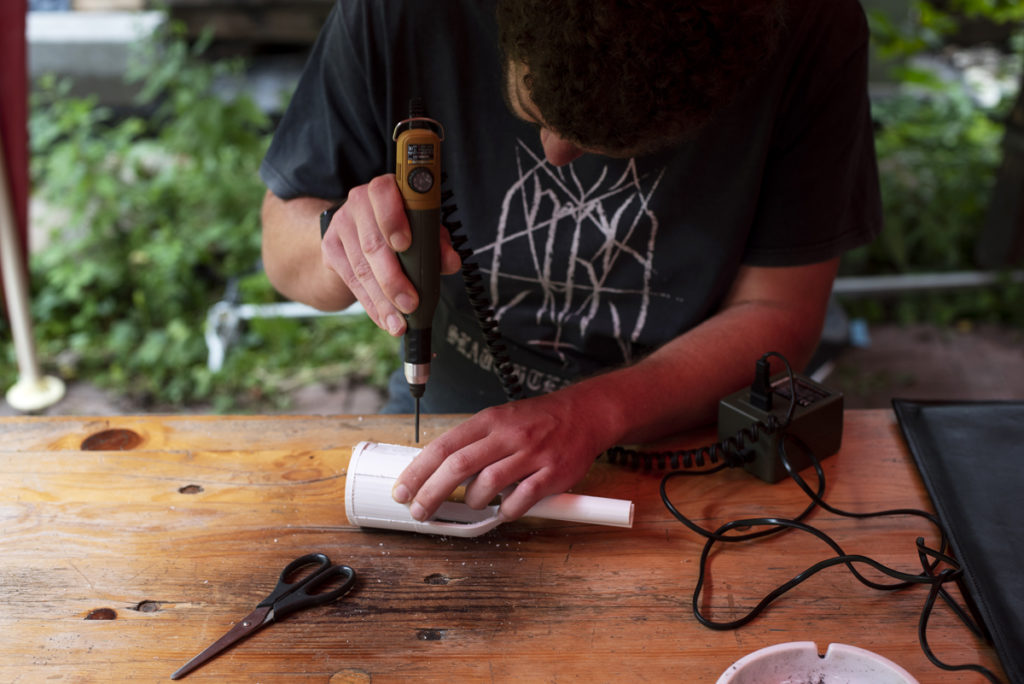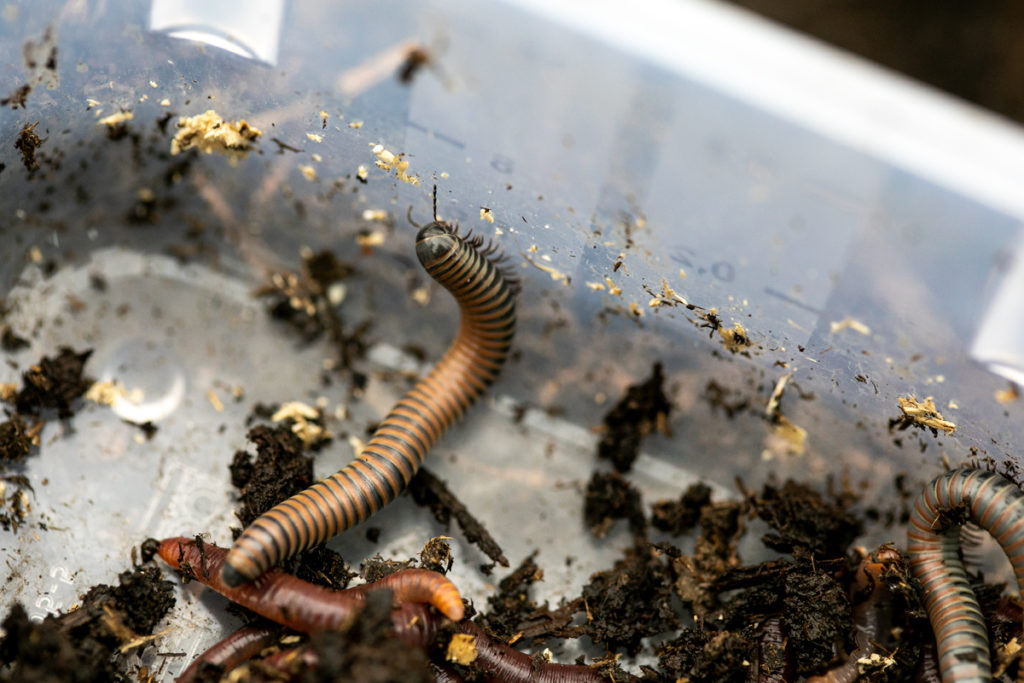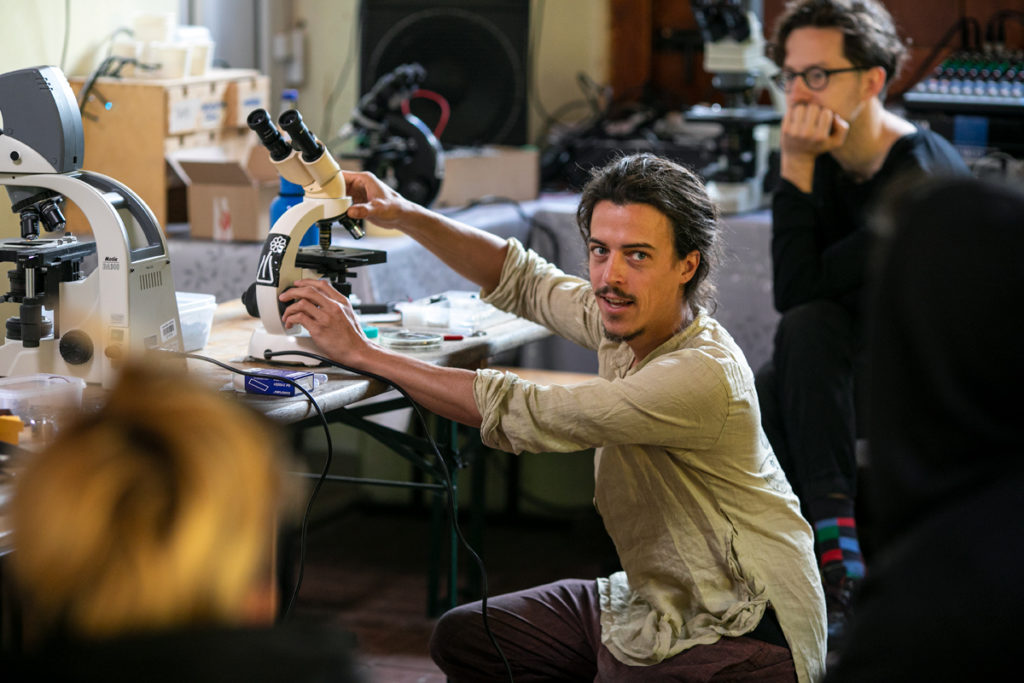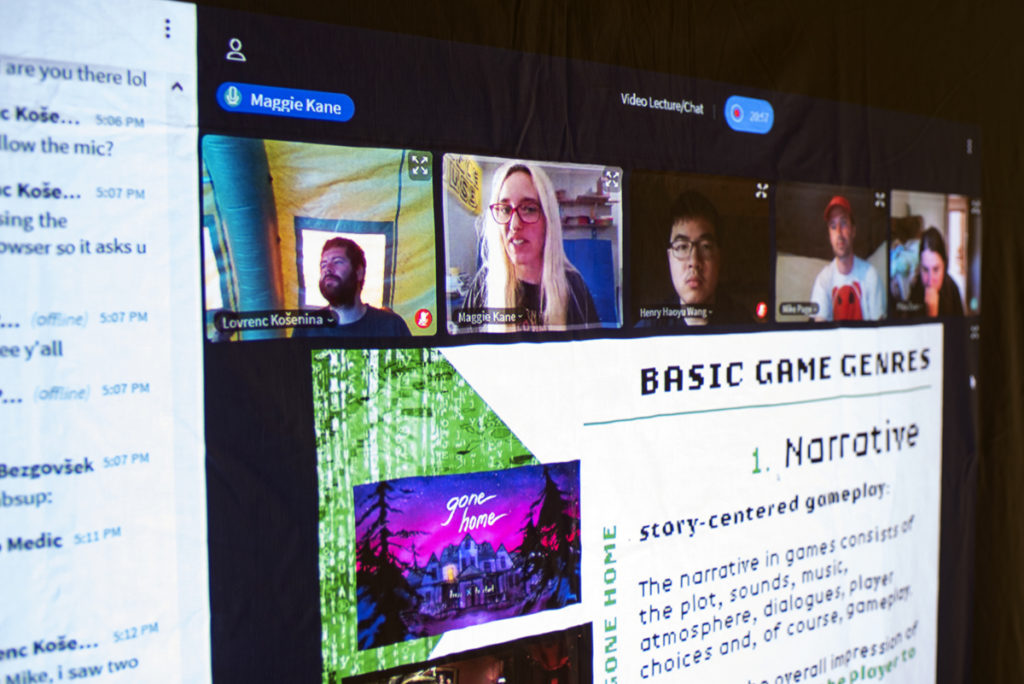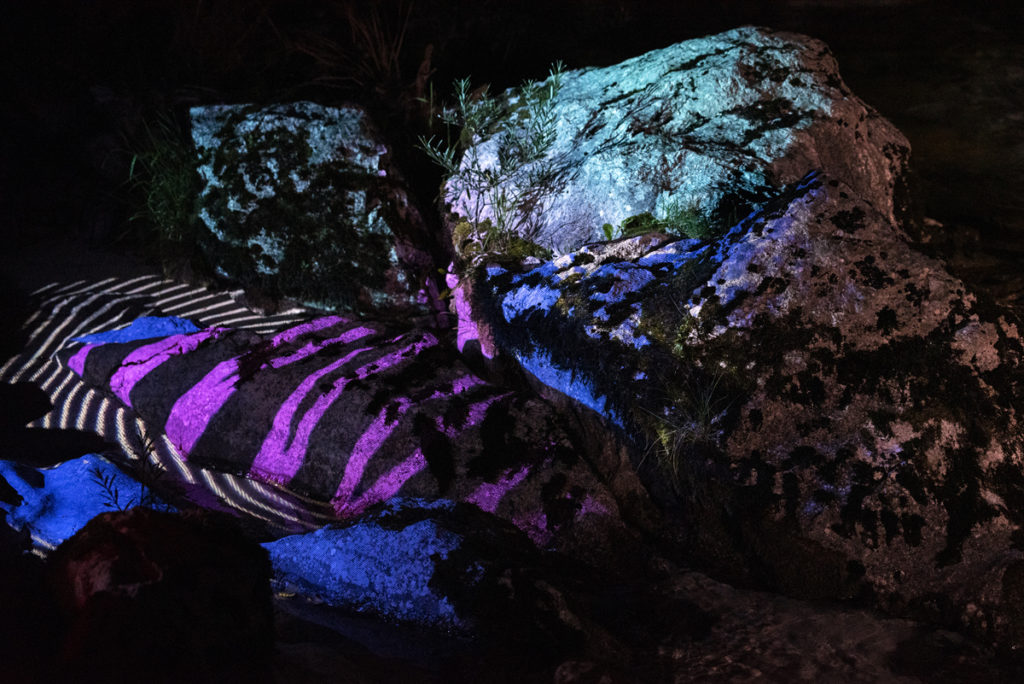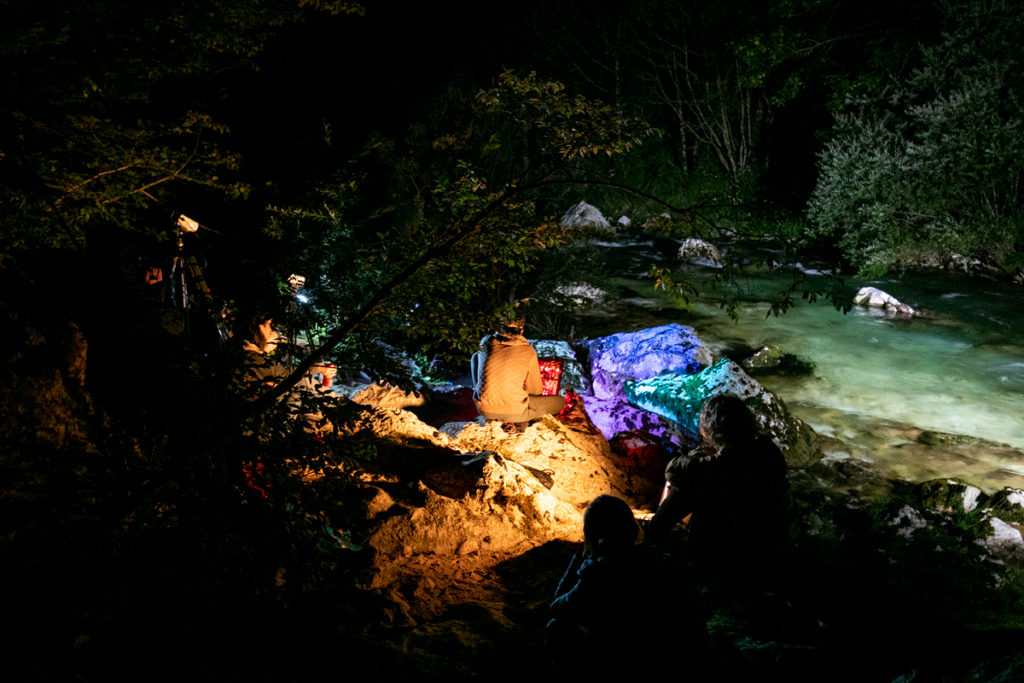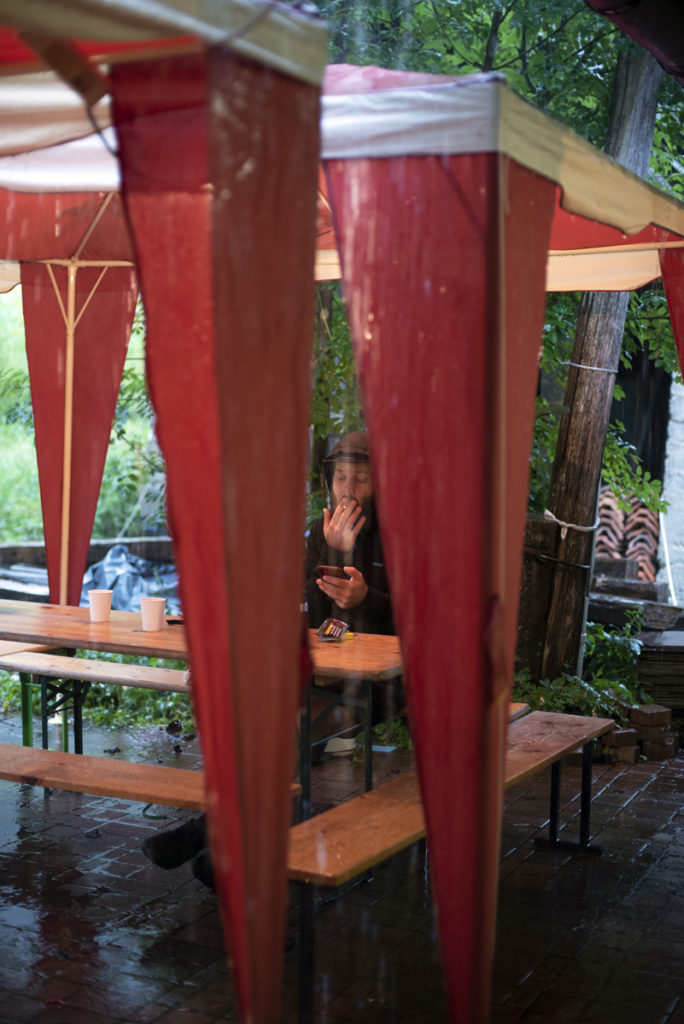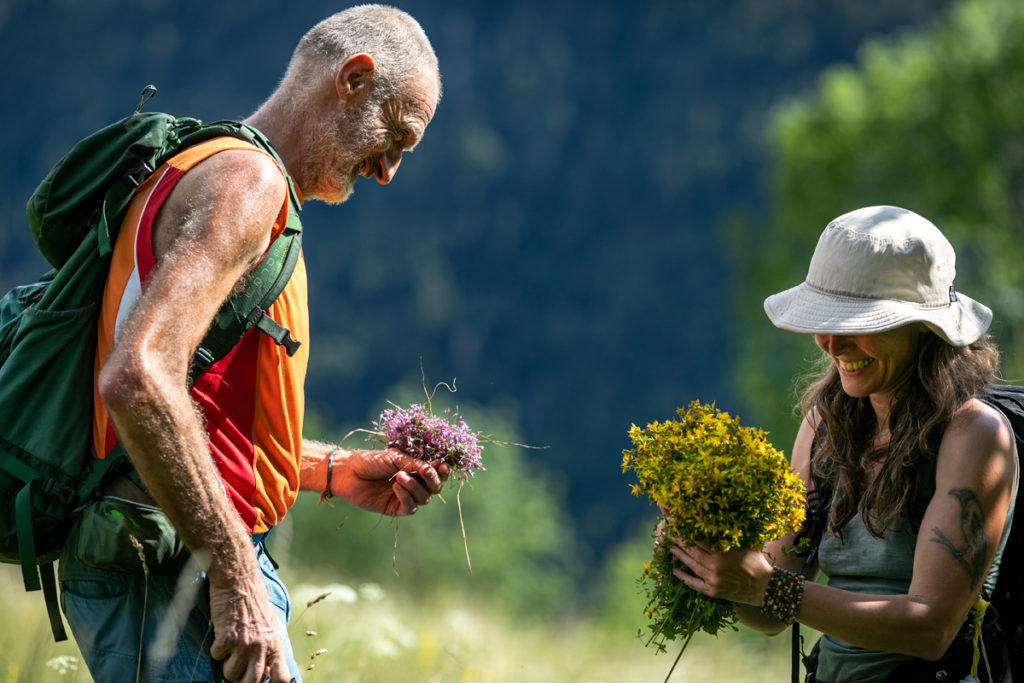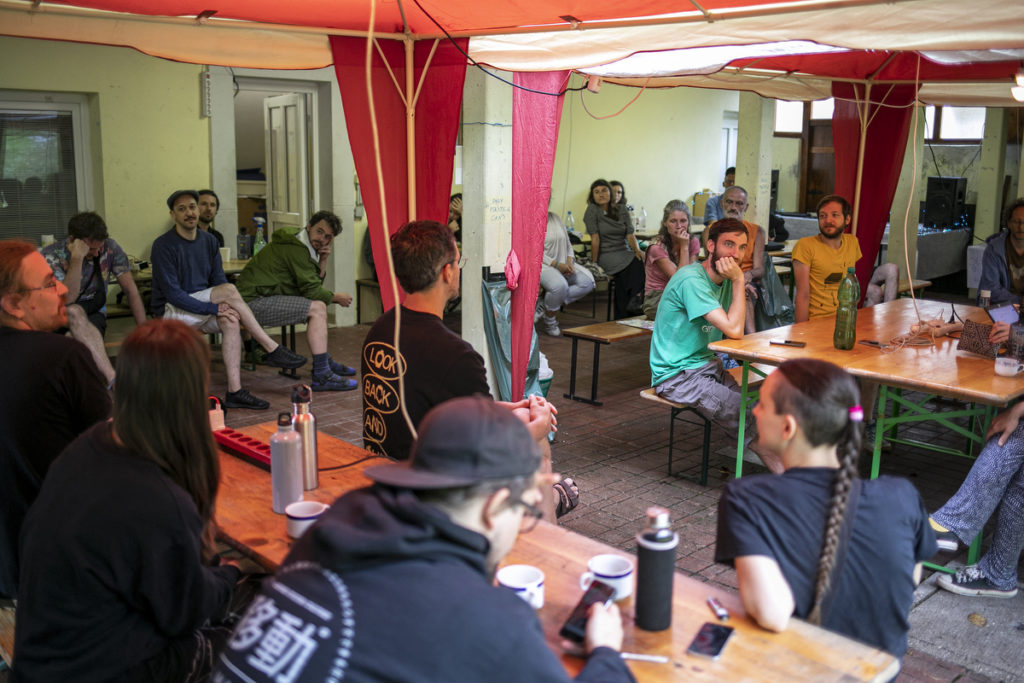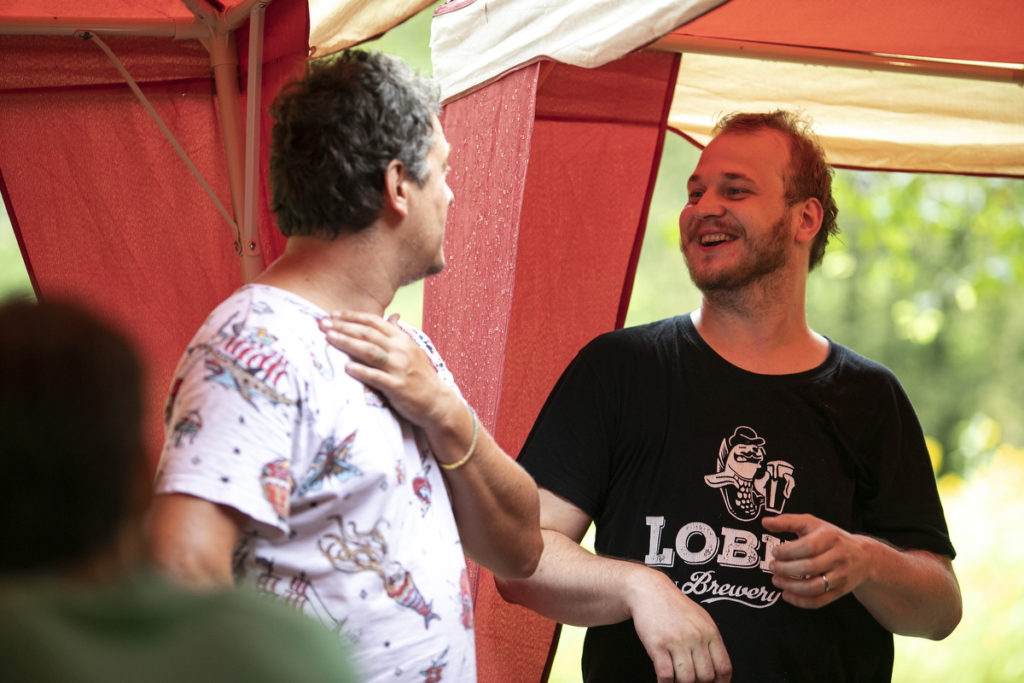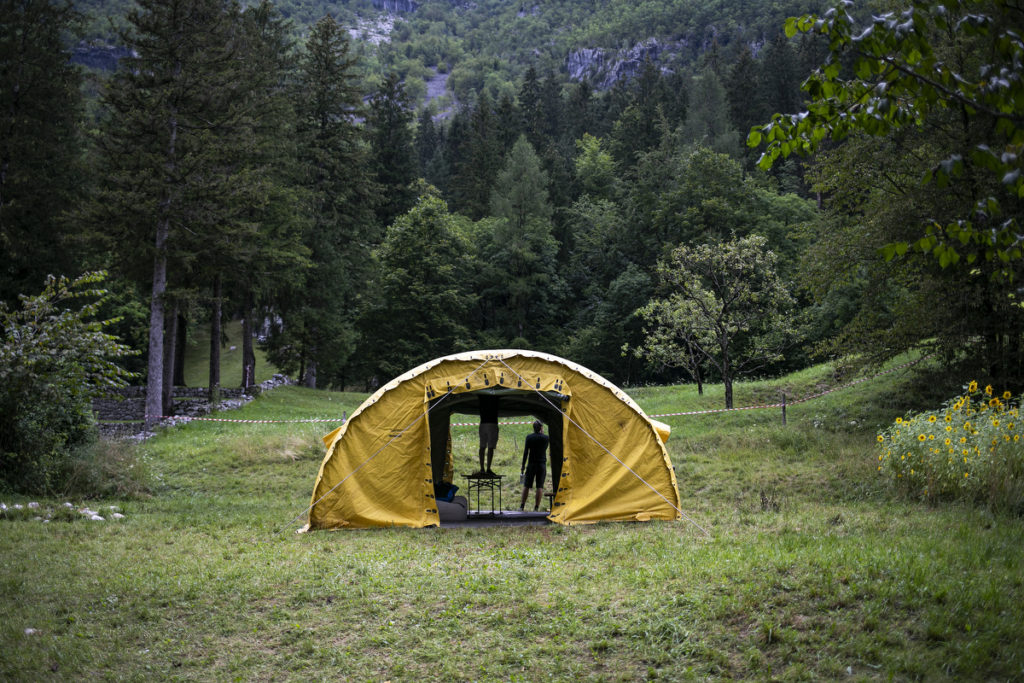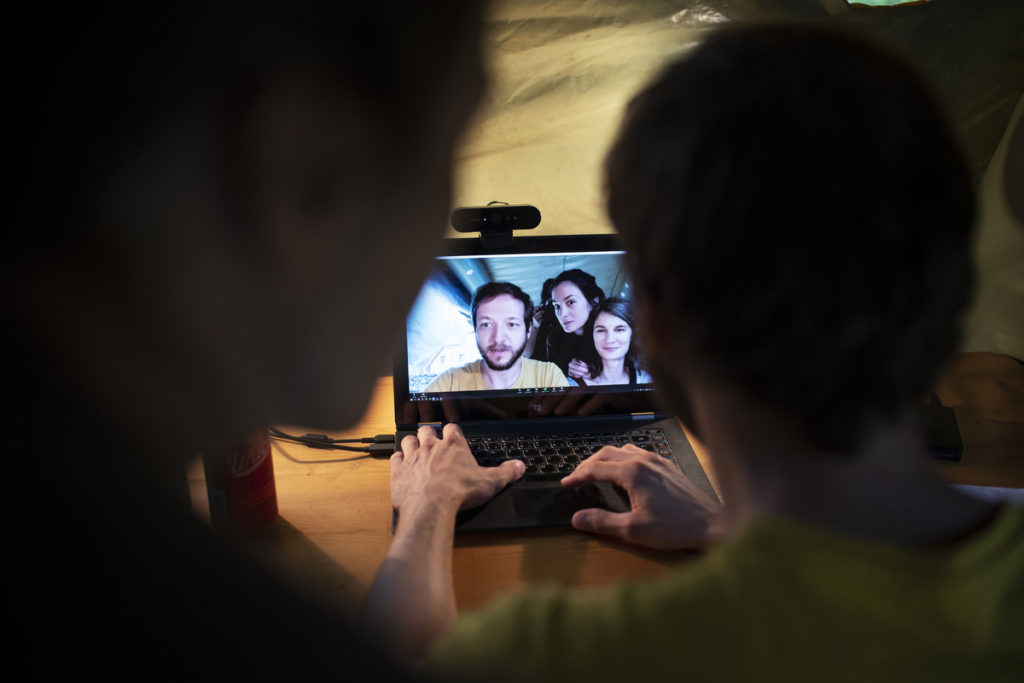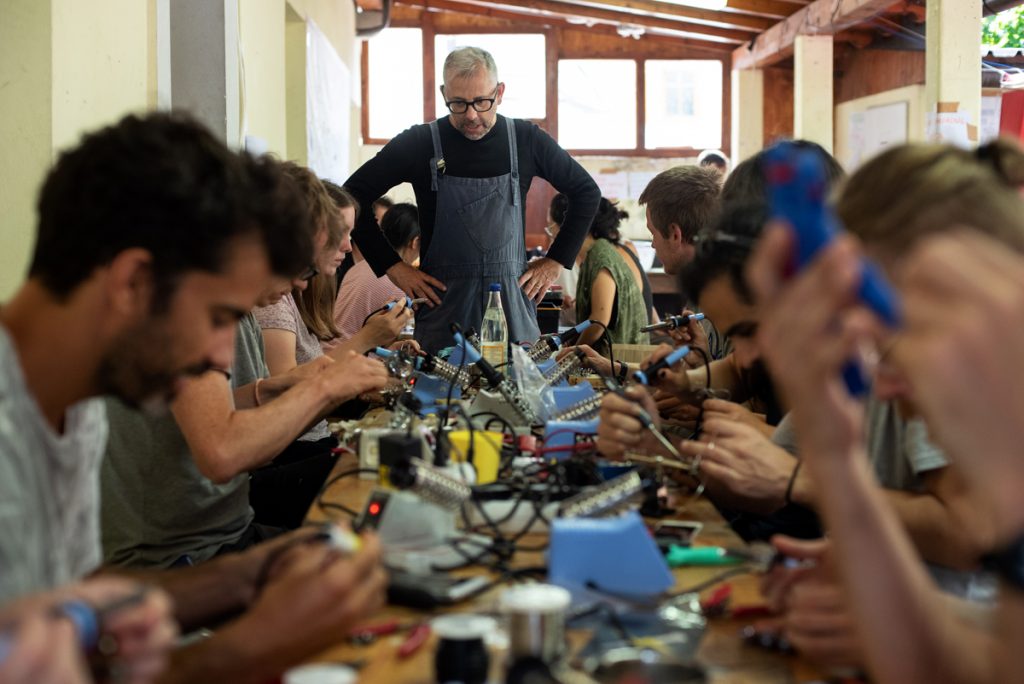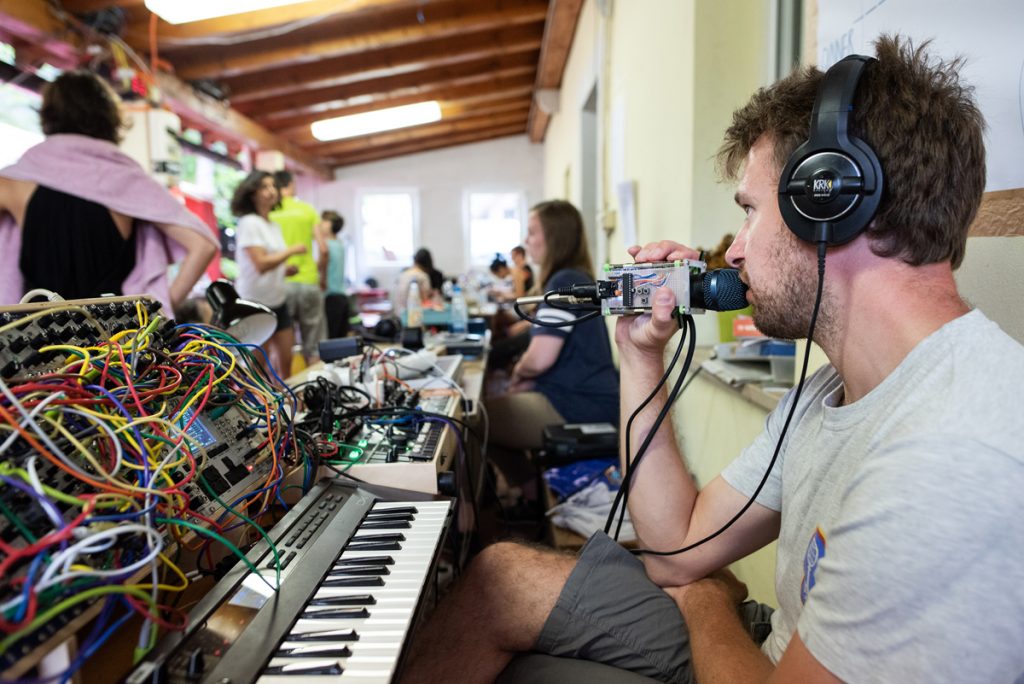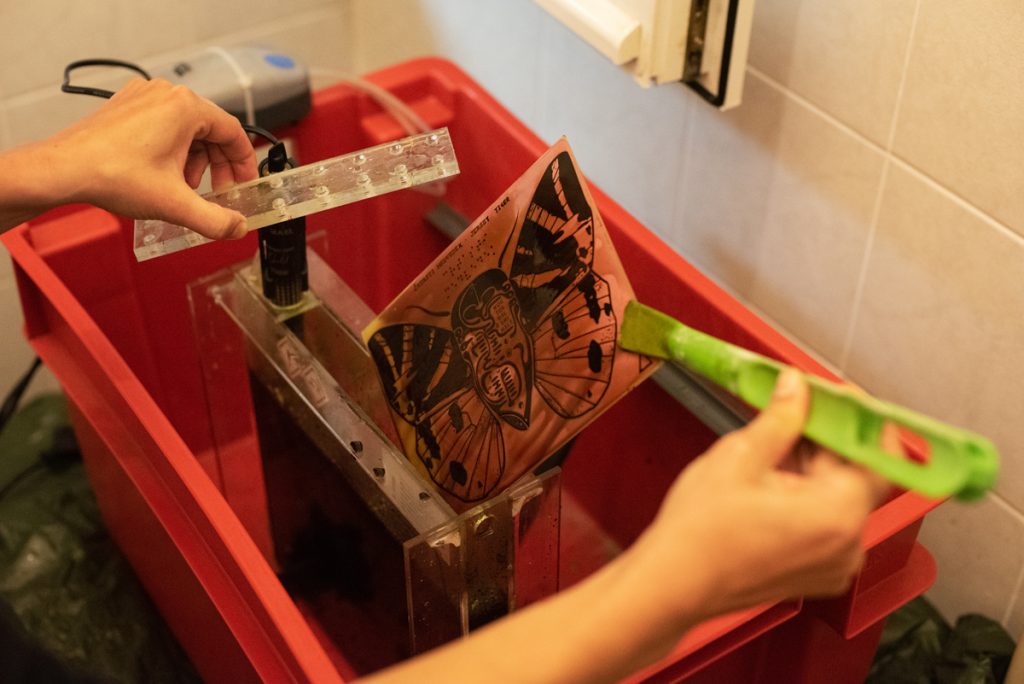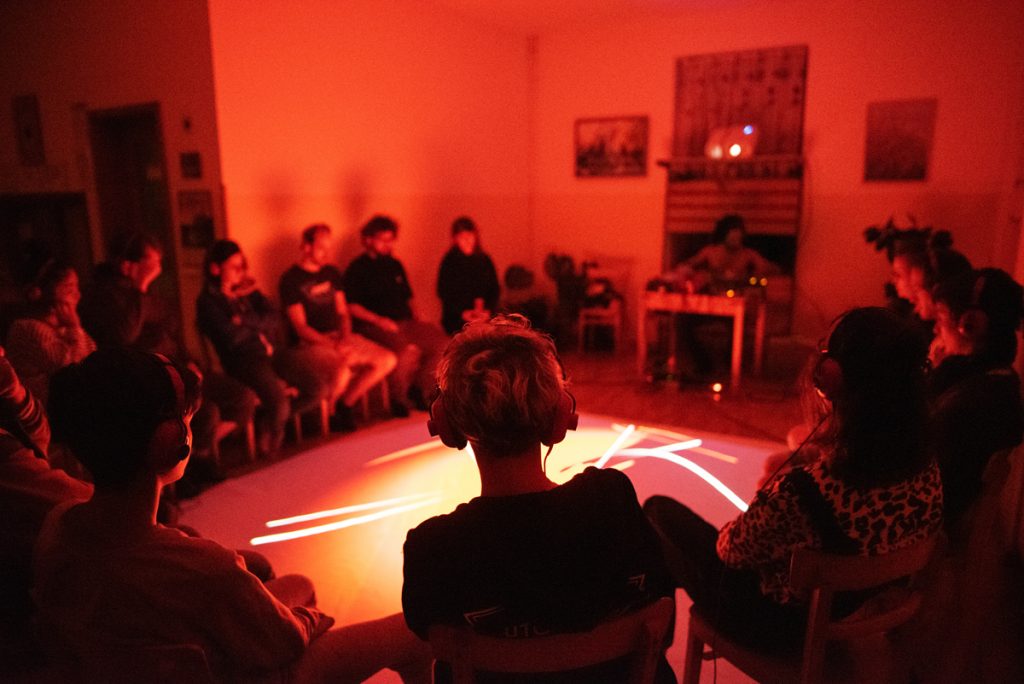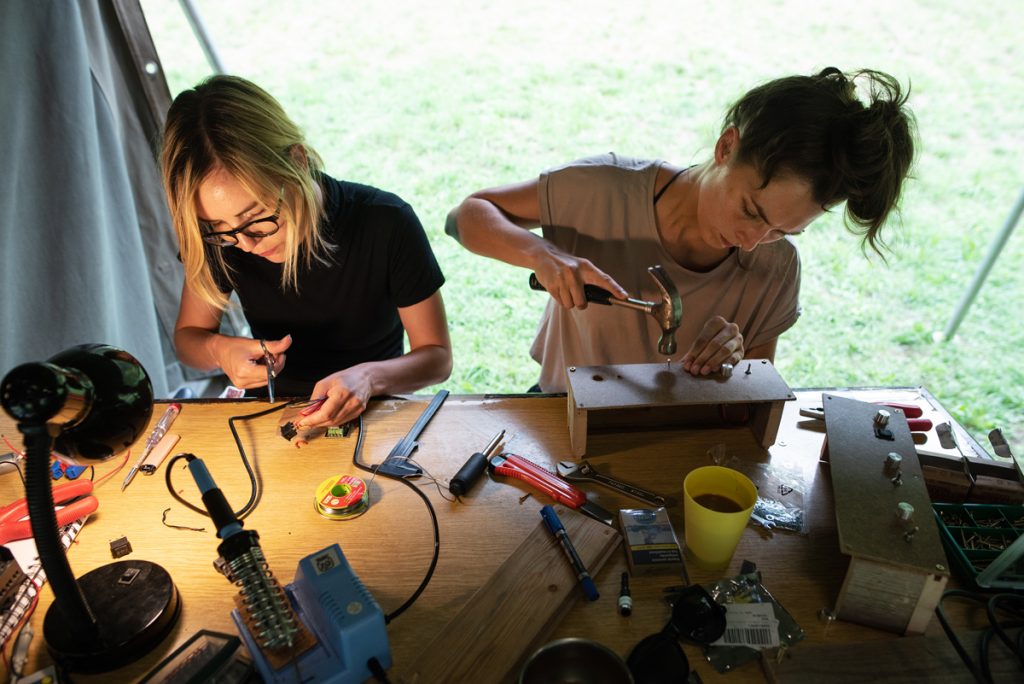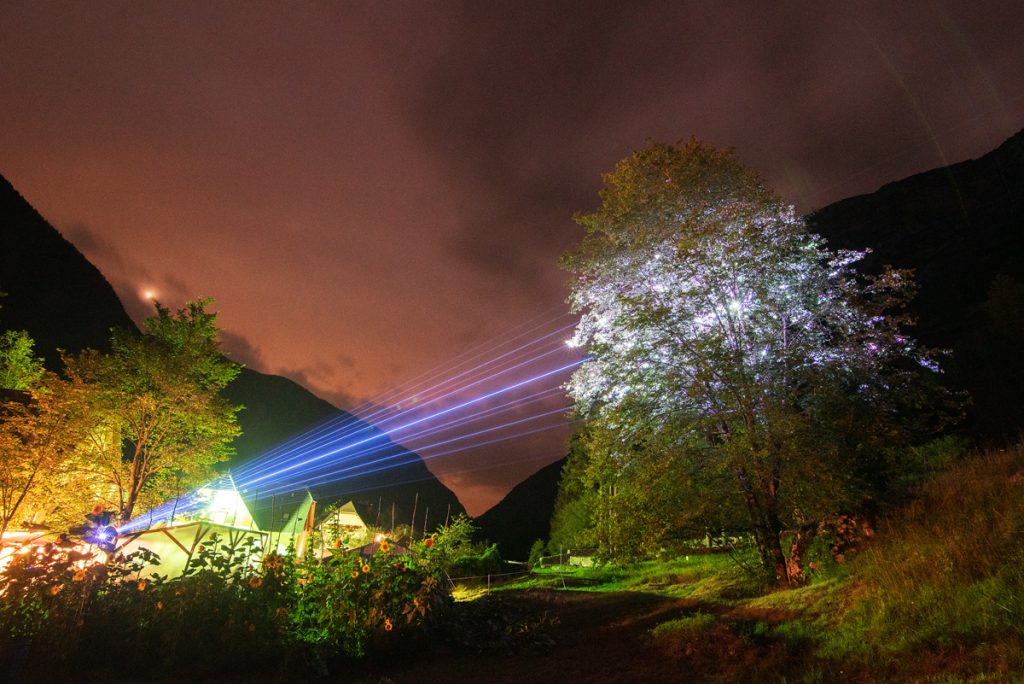On the first working day, PIF’s backyard was buzzing with excitement already at breakfast time. But while everyone else was still getting ready for the activities ahead, the cooks Klemen and Miha proudly presented their first creation.
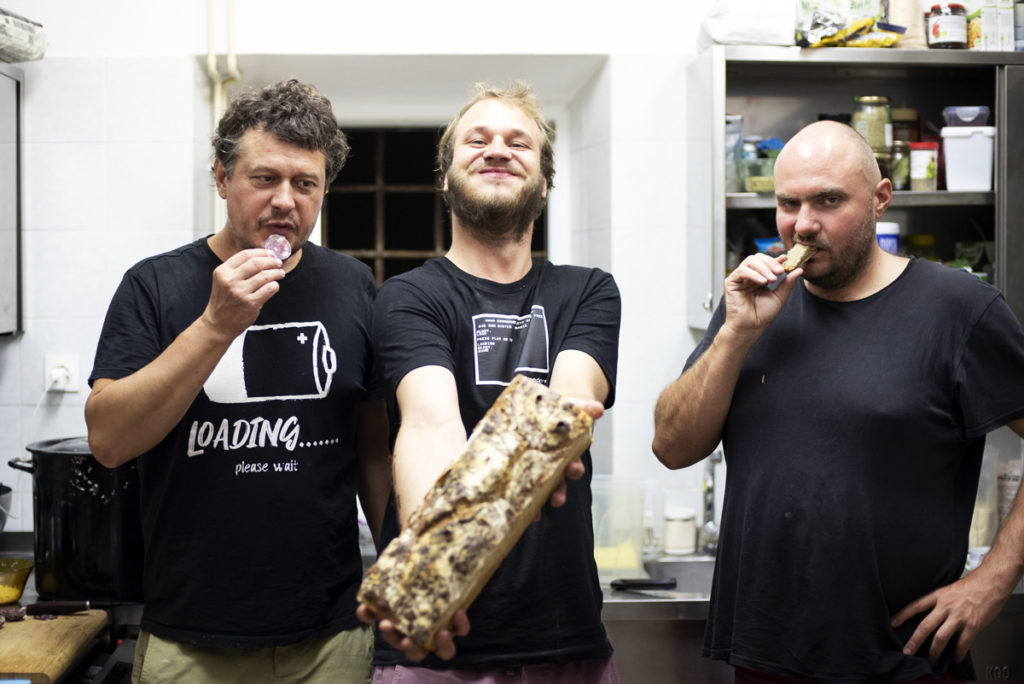
The beer brewing workshop, held by Rob in Neža’s barn was one of the first events of the day on Monday. By filling, filtering and explaining all possible variables and hacks, Rob showed all the people present how to make their own beer at home, according to each one’s individual taste.
A Pale Ale takes about one month from grain to glass, but the PIFcamp-goers will attempt to create a beer in five days! The smell of the boiling mixture, expanding to the grass field above where Luka’s dome was being built, together with a slight general inebriation due to the beer tasting available for the participants, made this workshop a useful sharing moment, and a typical mitteleuropean summer breakfast experience.
On the other side of the camp, in the tent, a Feminist hack acupuncture workshop was taking place. Led by Stephanie Wuschitz, the participants focused on building a device to sonify your most active acupuncture spots on the surface of your skin and also connect the input from your acupuncture points to Pure Data.
Stephanie Wuschitz, whose attendance at PIFcamp is supported by Österreichisches Kulturforum Ljubljana (many thanks!), works at the intersection of art, research and technology, with a particular focus on feminism, open source technology and peer production. She is one of the core members of Mz* Baltazar’s Lab, a collective and feminist hackerspace based in Vienna.
The workshop used fair trade, self-made and recycled electronic parts and explored the capacitive quality and resistance of our own body.

After lunch, a well-attended introduction into designing PCBs (printed circuit boards) with open-source software KiCad led by Klemens Kohlweis kicked off the workshop that will continue during the week. On Monday, the group talked about challenges and possibilities of the design and manufacturing process, but in the days to come they will focus on drawing their own functional and/or beautiful circuit boards – and hopefully even get them manufactured by the end of the PIFcamp week.
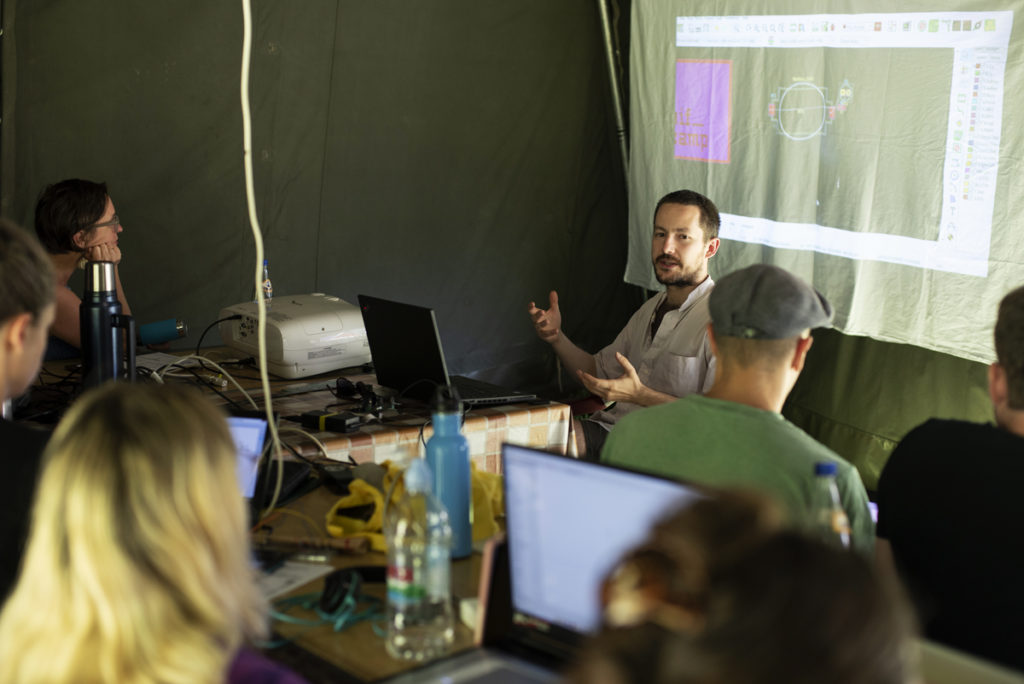
Just before dinner a group of fungi friends gathered for the first story-telling and speculation session of the Internet of Fungi project by Rosi Grillmair. Rosi proposed this speculative storytelling project to imagine an alternative internet network, based on fungal systems. The main question is how we could benefit from and nurture these systems to send messages via these already existing paths. Maybe, we could invite the networks to grow close to human communities and create a data highway of nutrients and information? Which communication protocols are used in fungi networks? What does the fungal network need to flourish?
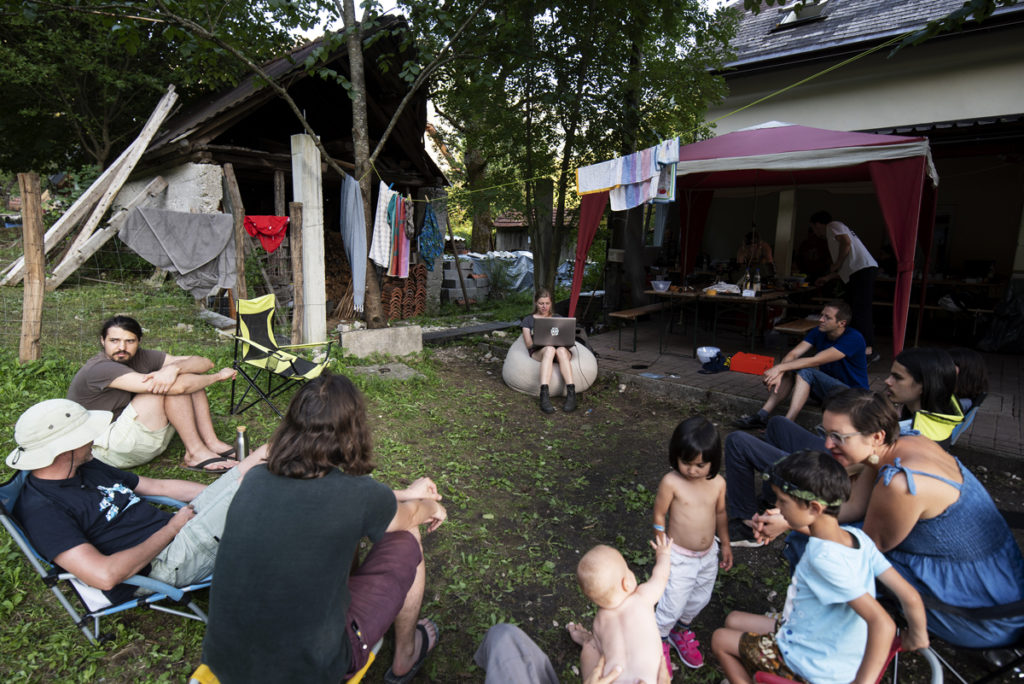
After dinner, multiple activities were happening around the camp. At the basketball field behind the school, a Catwalk dance class led by Janne Kummer offered some quality and fun evening exercise. Luka the firestarter took care of the first bonfire of this year’s PIFcamp, while in the tent Polona led the by now traditional “Losing at Tarok with Polona” workshop session.
